Now for part three of our Scottish Sojourn. I am sitting here in my hoos on the bay in Newhaven, window wide open welcoming the sun. It is a glorious auburn night here in Edinburgh. And I’m smiling, reflecting on the last few days of my trip with mum. All the wonderful things that have happened recently. It’s all too good. It truly feels that way, a world of dreams. Everything is coming together – a spectacular sensation. I genuinely don’t think I’ve felt this calm and content before… Despite the fact that my promise of a three post summary is almost definitely not going to happen. Helaas!
Let’s begin where we left off last time, shall we? In the Scottish Highlands. Those of you who’ve been will understand… Here, you really get the sense of Scotland being a land where nature's grandeur meets untamed wilderness – a feeling that has long inspired awe and reverence among great writers. When we were in Abbotsford earlier this trip (see prior post), I discovered a quote by Sir Walter Scott that aptly captures how one feels in the allure of these rolling hills and magical glens, "Where is the coward that would not dare to fight for such a land as Scotland?" Where, indeed? The mounts really embody the rugged and fierce spirit of the Scots, and who wouldn’t fight for such a place? For wee bit hill and glen?
Our destination: the Outer Hebrides. We stopped off in Fort William to buy supplies before Mallaig – and then… where we were booked to board the ferry to South Uist. It’s worth mentioning that there’s a real gem for vegan cuisine here called the Wildcat. Possibly the best hot chocolate with oat milk I’ve had yet – no word of a lie. This buzzing café is frequented by locals, cyclists, and walkers. It embraces sustainability in everything, including loo rolls, and sources locally - with sourdough from a micro-bakery around the corner. It offers largely organic and whole-food options, which is pretty neat. And located just up the way from the outdoor store (Nevisport)where you’ll find bits of equipment you never knew you needed. To prep for the Ring of Steall hike, I made sure to visit this place. Equipped myself with a compass, map, nibbles, and some sound advice - all instrumental for the journey, especially given the dreich weather on the day.
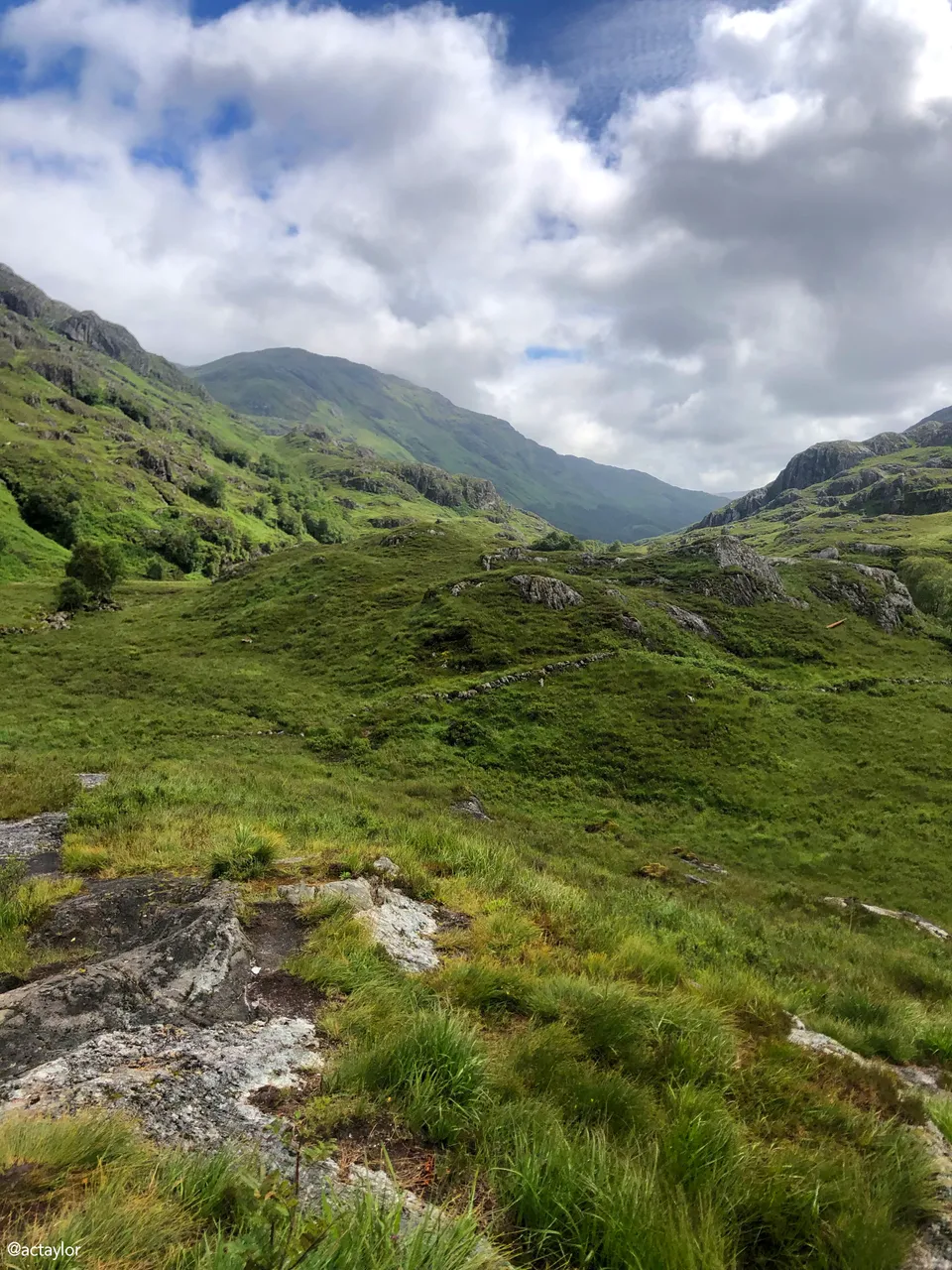
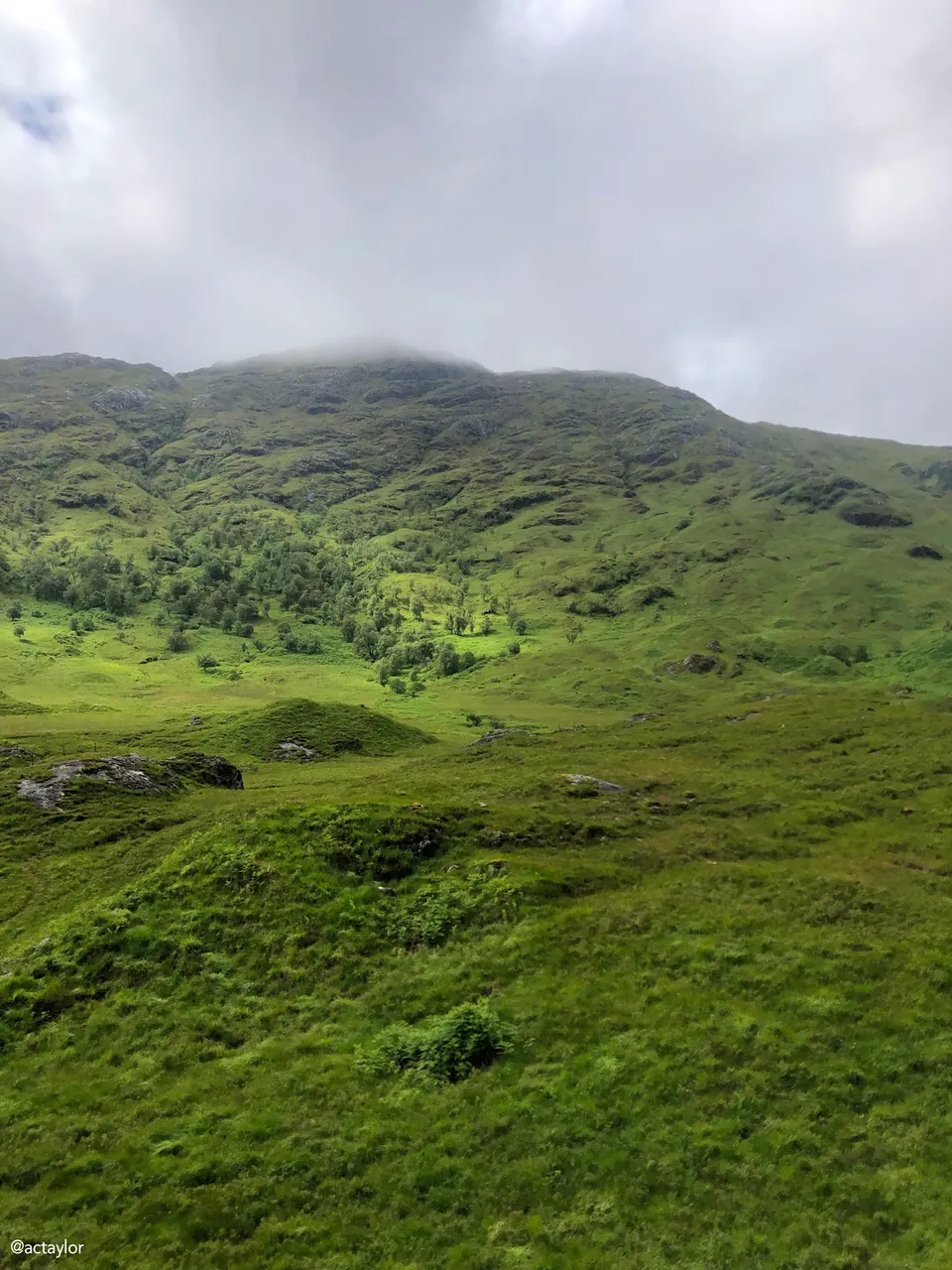
Mallaig is Bonnie Prince Charlie country. We'll hear more of Charlie later... Unfortunately, we missed the Prince’s Cairn sign, located 7km from Lochailort. Here Bonnie Prince Charlie left for France at the end of his doomed campaign. This evocative location, with its magnificent scenery, stands as a poignant reminder of his misty-eyed longing for Scotland. The West Highland Railway is on this stretch and we did manage to catch sight of the Harry Potter train as it went by. It’s a wildly scenic but smooth route past Loch Morar (apparently there is a monster called Morag here, adding to the lake's eerie quality... mind you, there isn't much of Scotland that doesn't have an eerie quality, if I'm honest haah). The single-track road leads from loch to coast, and the prettiest part - with wooded islets, small beaches, lochside meadows and bobbing boats – is Camusdarach and the Sands of Morar. Sitting in the passenger seat, I slipped my hand out the window and let it dip and dive in the eddies of the wind – sunny bright with pristine sandy bays. This is the setting for “Local Hero”, a 1983 comedy-drama that explores themes of corporate versus community values, environmentalism, self-discovery, cultural clash, and the deep sense of place and belonging. Although outdated, it’s a film that stresses the importance of preserving natural landscapes and traditional ways of life. The sand here is among the best in Scotland with lots of rocky bits for exploration.
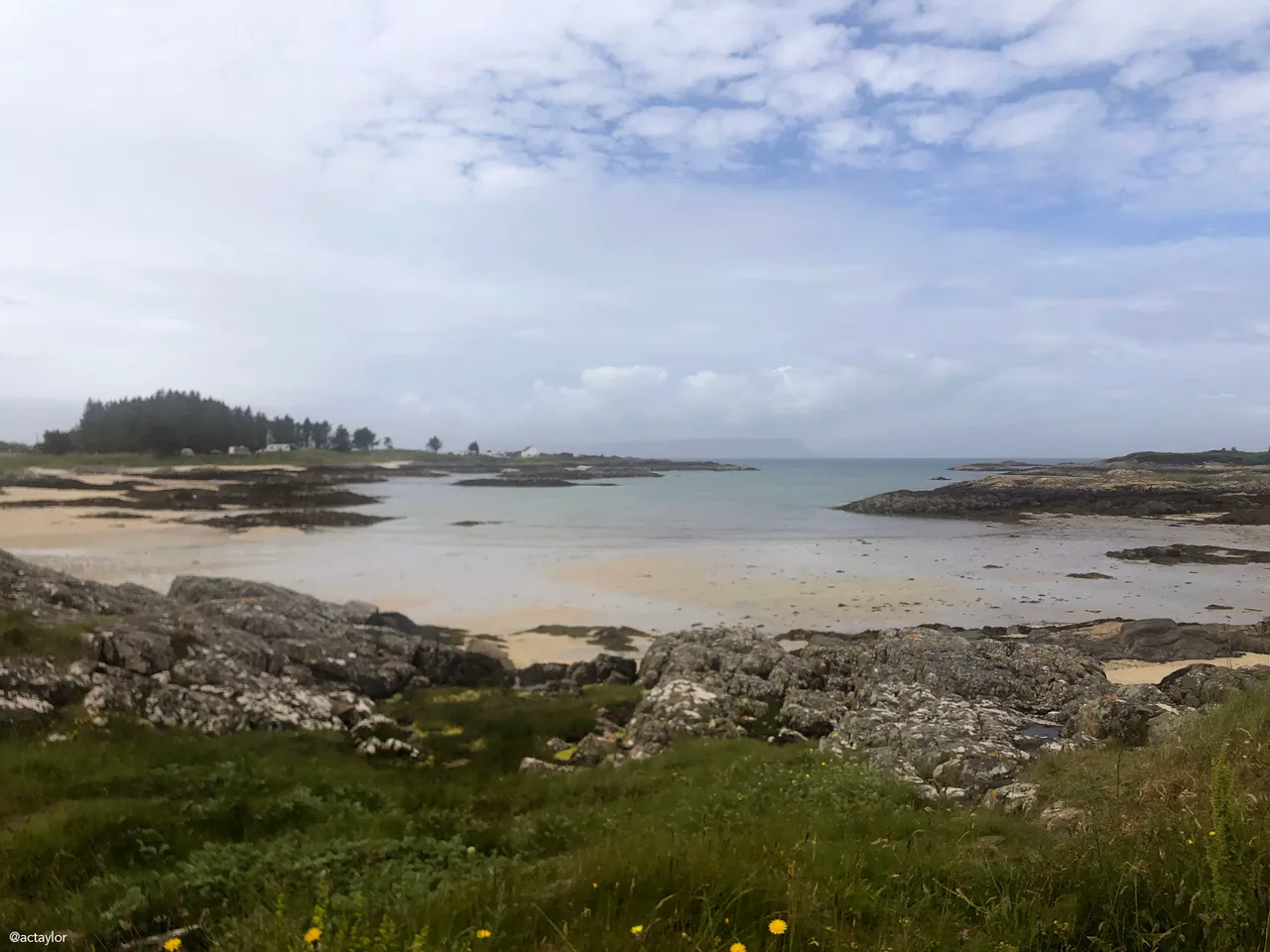
In Mallaig, you'll find The Bakehouse in Old Quay on the harbour near the yacht pontoons. Having lunched there, it comes recommended. According to Peter Irvine (“Scotland the Best”), Matt and Kate McCarthy’s brilliant bakery is “quite the best thing that’s happened to food in Mallaig since the fish came in”. I sat with my sandwich on the jetty, with legs dangling over the water, watching a curious seal making its way around the bobbing boats.
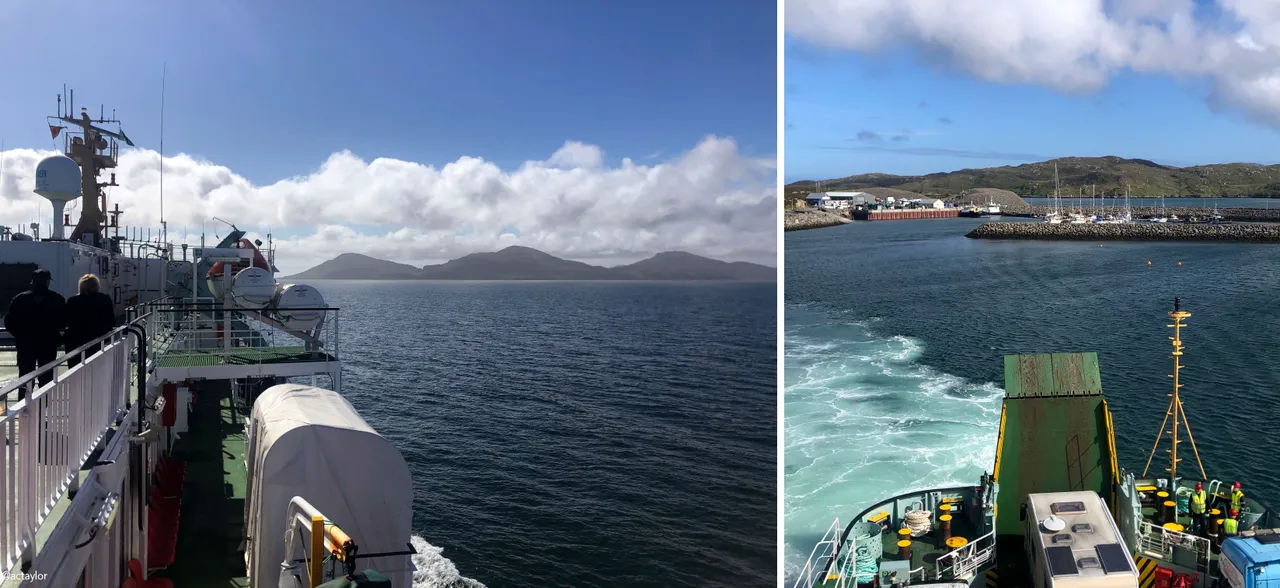
And then we boarded the four-hour ferry from Mallaig to Lochboisdale – the only direct connection from the mainland to South Uist in the Outer Hebrides. (For those who’re interested, it cost £24.60 for two people and £68.55 for the car. Although this seems expensive from the outset, it is undoubtedly cheaper than flying in and hiring a car on the isle.) I’ve heard that the journey is comfortable - with an onboard café and outdoor viewing areas – but seeing as I fell asleep almost as soon as we’d departed, haha... I didn’t make the most of these amenities… Mid-voyage to Uist, I woke with a startled yelp - and mum, who’d quietly been reading her book at my side, looked at me funny and stated, “I think all those years of stress are finally starting to roll off of you”. And she was right. Since being offered the new job, there’s been a conscious shift– physically, my body is learning how to breathe again. And, mentally, my exhausted brain is withdrawing from its steady intake of stress on a drip. That ferry journey to South Uist was a transformative one. It gently coaxed me into a new reality - one in which I had the safety net of a stable long-term position, back in a country surrounded by friends that I love. Mum, who has always been my constant rock, a firm believer in me... I’m so glad I could share that period of change with her. I'd left the old Alex behind on that shore in Mallaig.
As the Islands of Uist drifted into focus and Scotland’s breathtakingly stunning landscapes rose up on either side of our seafaring vessel, I rushed up to the observation deck to drink in the view. If things couldn’t get more poetic, dolphins guided us toward the distant shore.
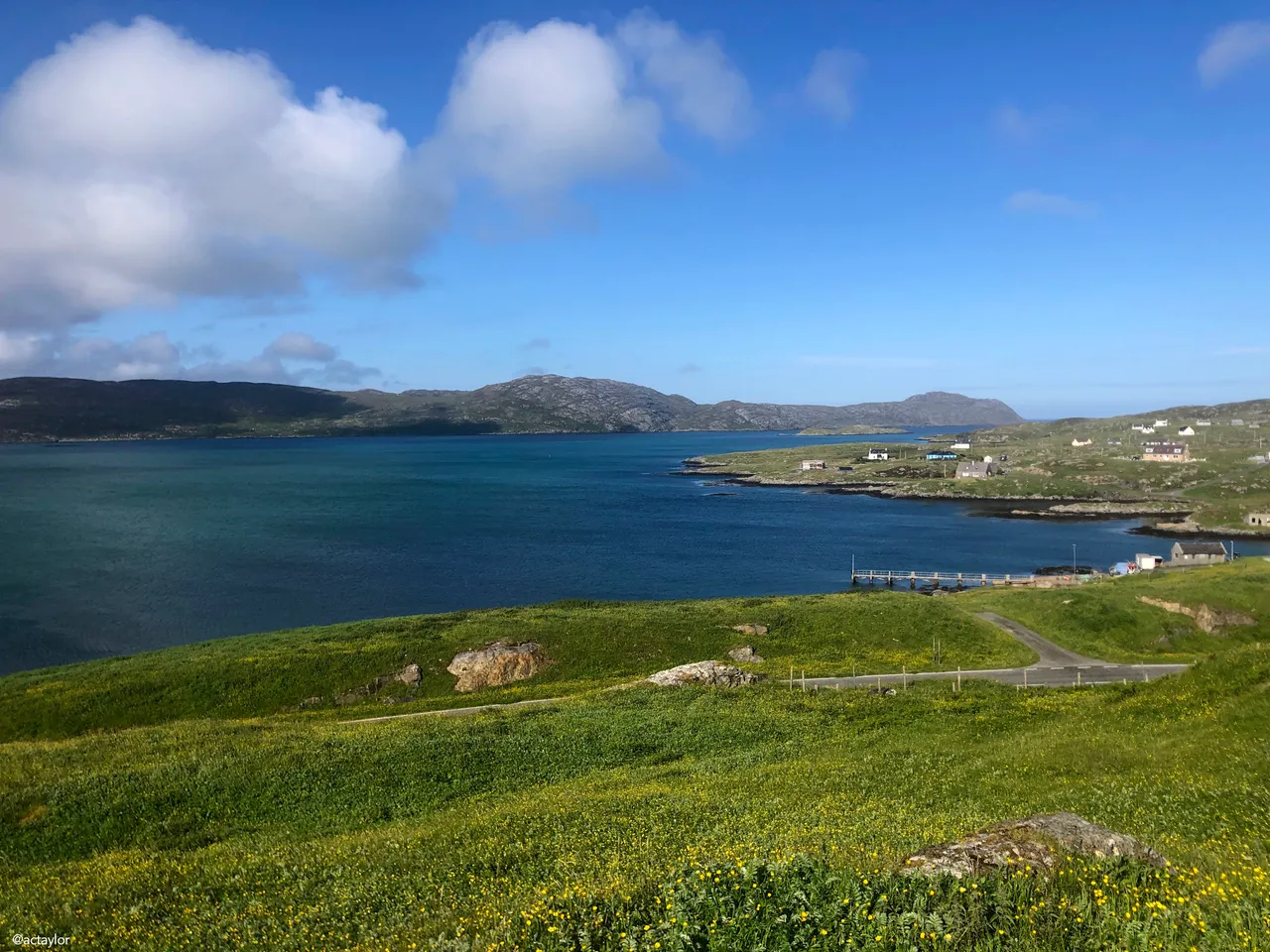
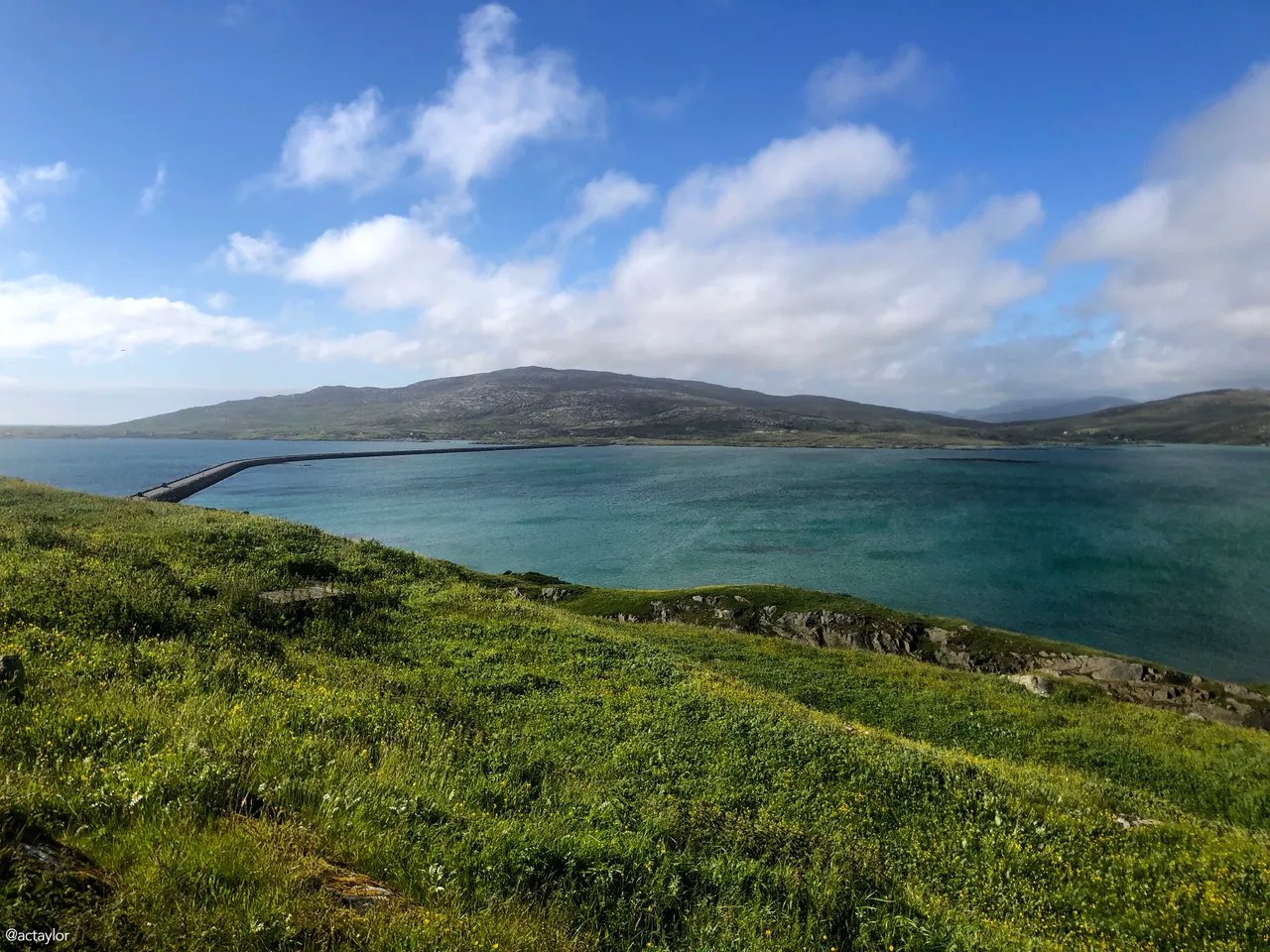
The road to Uist's most southern island, Eriskay, accessed via a causeway from South Uist, cuts a swathe across the land. Made famous for the 1941 sinking of the SS Politician and its salvaged whisky cargo, immortalized in Compton Mackenzie’s "Whisky Galore." (The 28,000 cases of whisky it was carrying went down with it but not before many of the islanders managed to ‘salvage’ some for themselves!) The island features idyllic beaches, St. Michael's Chapel, a hill to climb, and the Politician pub.
St. Michael’s Chapel is that rare example of an ordinary modern church without history of grand architecture. Built on the initiative of iconic poet and folklorist Fr. Allan MacDonald (1859-1905), who remains of the most important figures in modern Scottish Gaelic literature, the church dates from 1903. The altar is supported on a boat's bow (a quirky nod to the Politician?), with a ship's lamp on a nearby column. The building has charm and serenity, and imbues the sense of well-being that a religious centre should. It is no doubt the focal point of a relatively devout Catholic community - who clearly take good care of it. I've always been entranced by chapels and churches, cathedrals and shrines. This one, overlooking the Sound of Barra, is an edifying place whatever your religion.

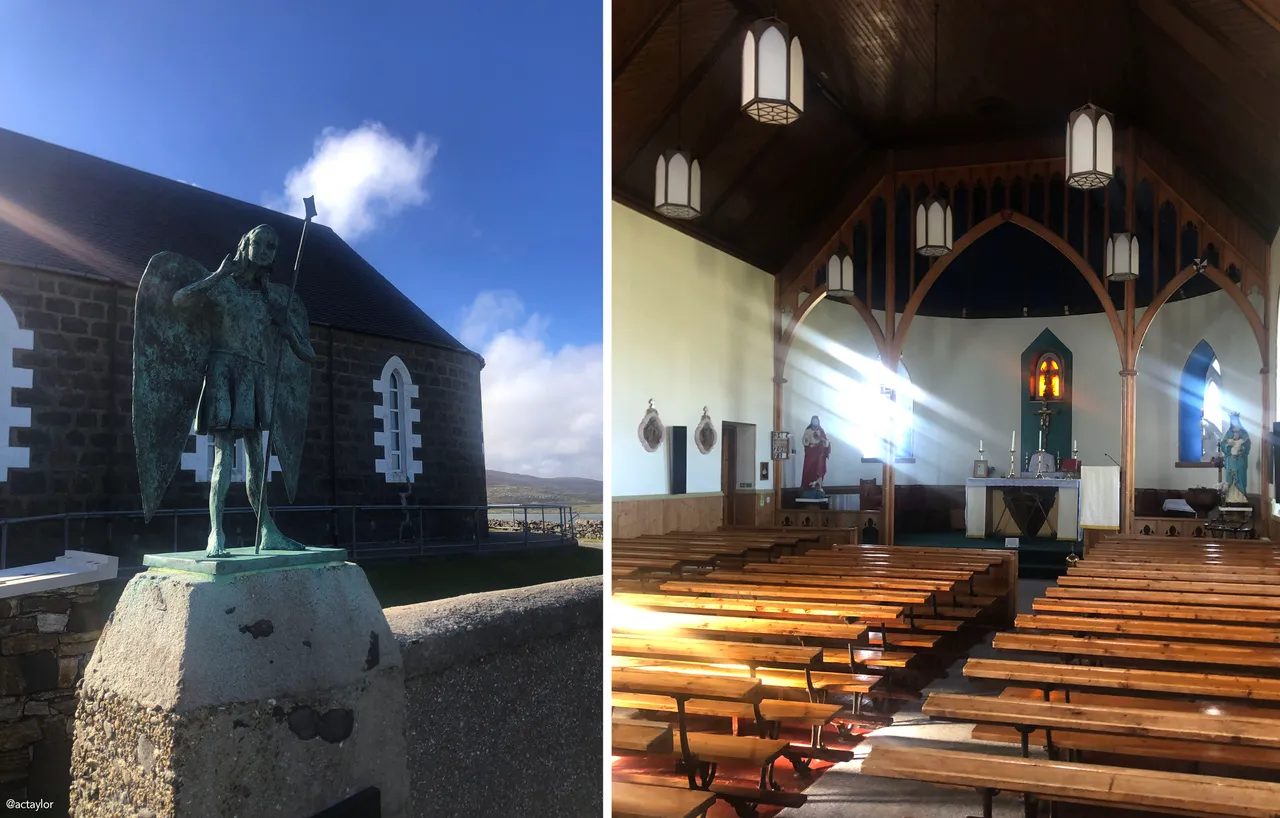
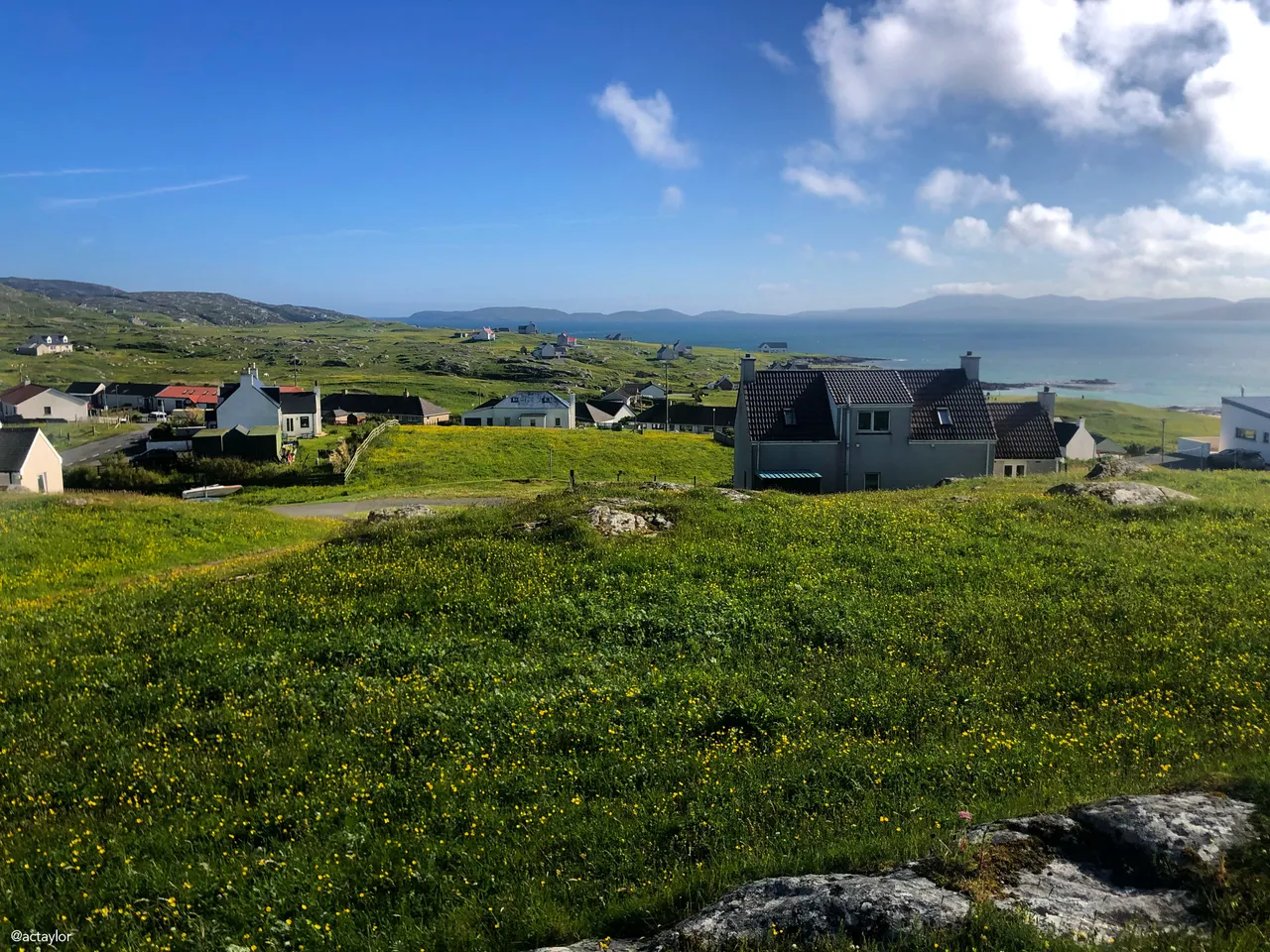
As for The Politician – a hub of activity for the island’s 200 inhabitants – well, it was just grand. The perfect place for grub. I spent the majority of the meal mesmerised by flock of starlings taking off and landing in the fodder beyond the glass room walls. After eating, I wandered into the garden and discovered a hidden sandy lane leading directly to Eriskay Beach. Further down the coast you’ll find Coilleag a’ Phrionnsa – or The Prince’s Cockle Strand. It happens to be one of the prettiest and most sheltered beaches – in the Uists. Coilleag a’ Phrionnsa is named after Bonnie Prince Charlie as it was here that he first stepped foot on Scottish soil.
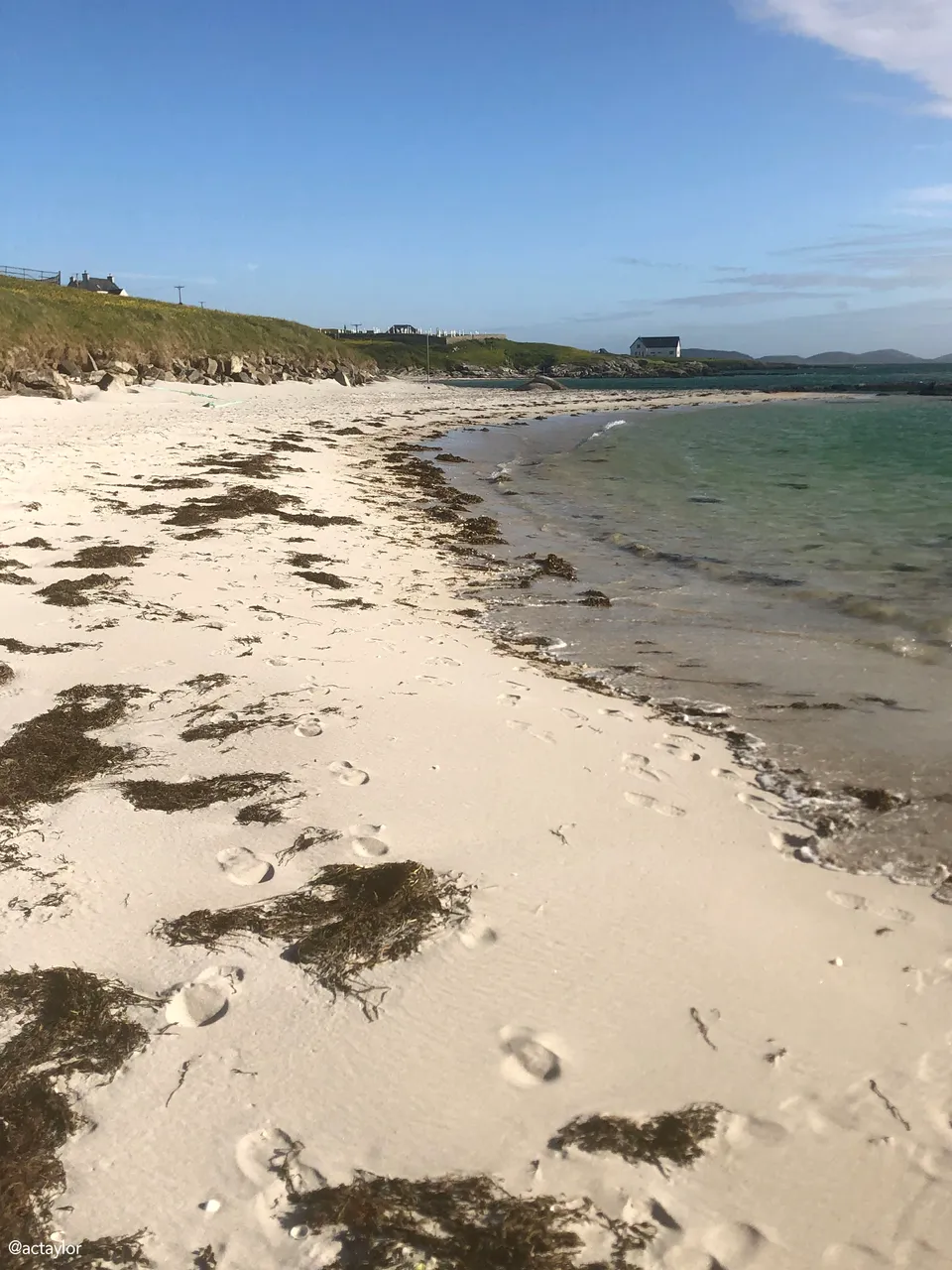

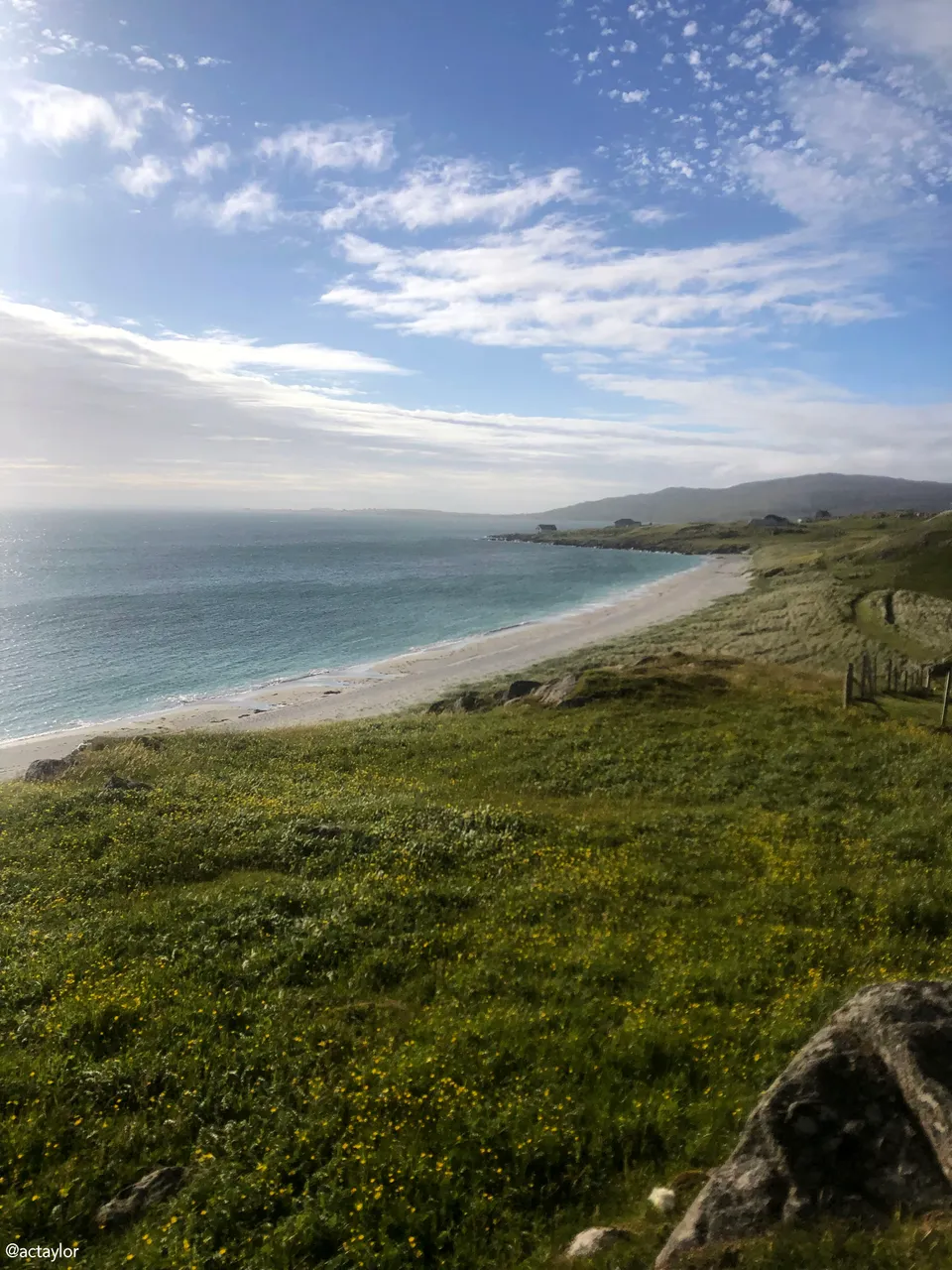
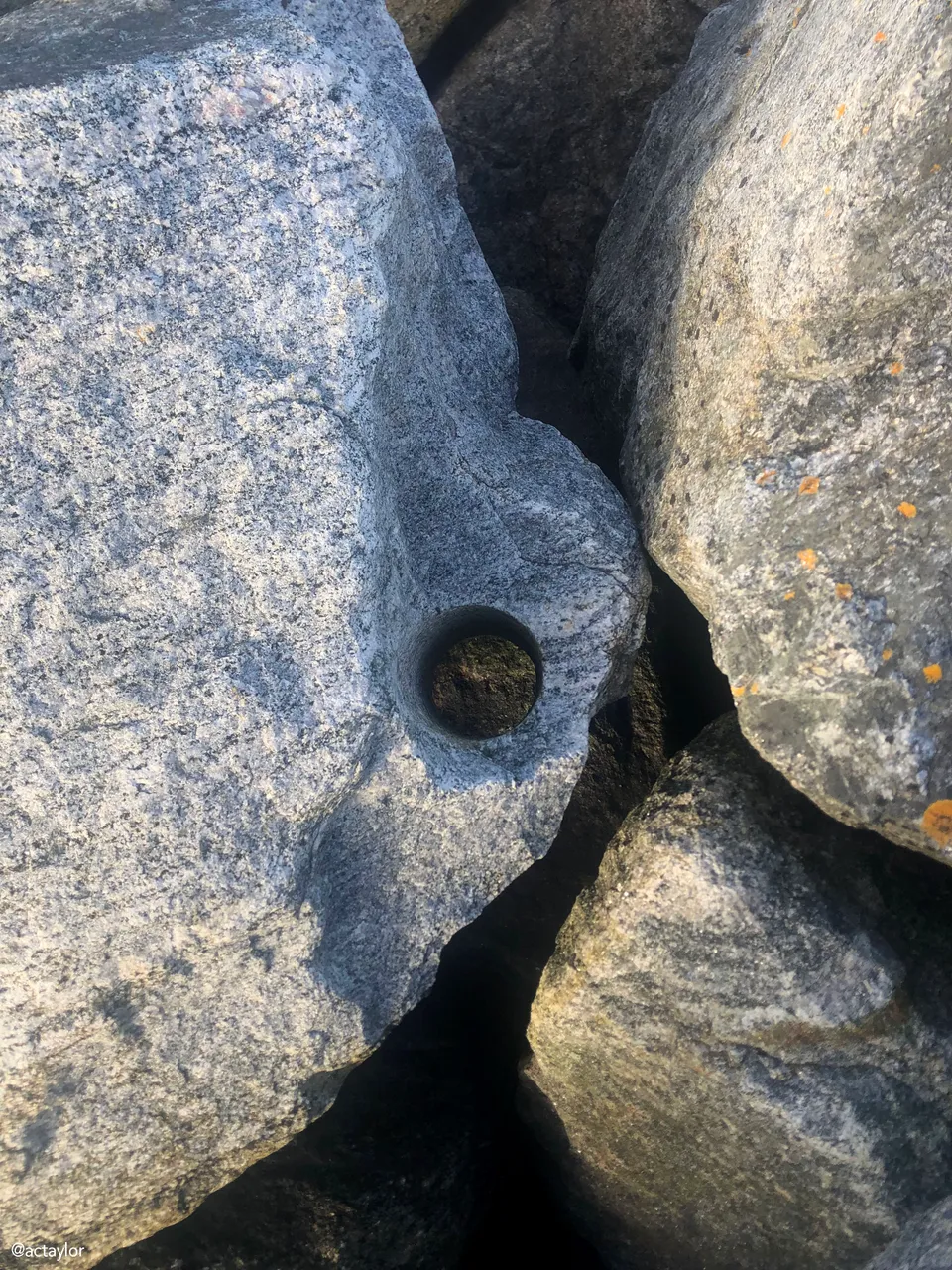
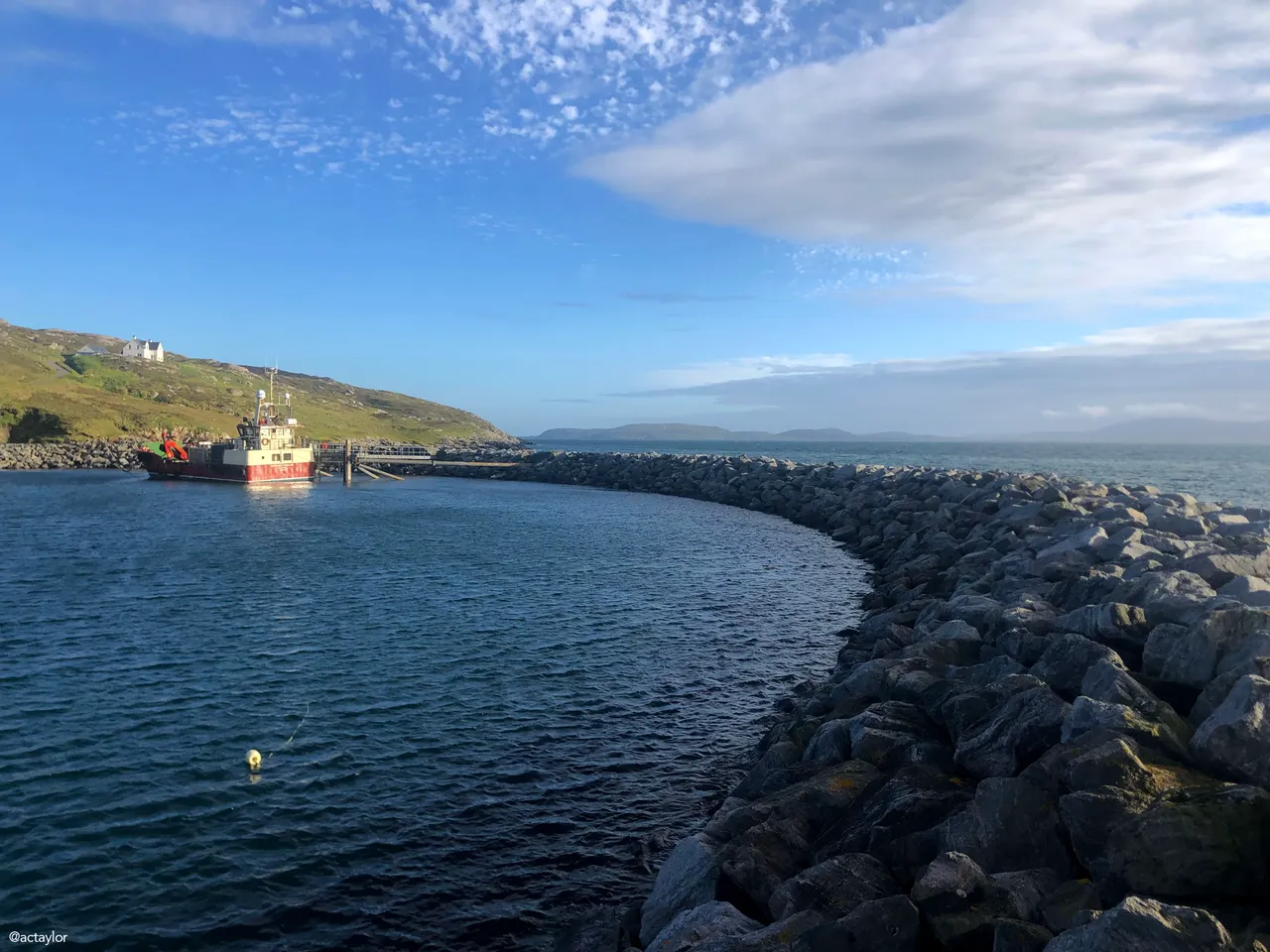
On the machair land surrounding this beach you can find Sea Bindweed – a flower which is not found anywhere else in the Hebrides. (Legend has it the seeds of this flower are believed to have fallen from Bonnie Prince Charlie’s pocket when he came ashore.) Simply because it’s an appropriate moment to reflect on the words… let me introduce you to "the Skye Boat Song" for a bit of context, which we played through the speakers on the winding way downhill.
 The Skye Boat Song - source
The Skye Boat Song - source
Speed, bonnie boat, like a bird on the wing.
Onward, the sailors cry!
Carry the lad that’s born to be King
Over the sea to Skye.
Loud the winds howls, loud the waves roar,
Thunderclaps rend the air.
Baffled our foes stand on the shore.
Follow they will not dare.
Speed, bonnie boat, like a bird on the wing.
Onward, the sailors cry!
Carry the lad that’s born to be King
Over the sea to Skye.
Many's the lad fought on that day
Well the claymore did wield,
When the night came, silently lay
Dead on Culloden’s field.
Speed, bonnie boat, like a bird on the wing.
Onward, the sailors cry!
Carry the lad that’s born to be King
Over the sea to Skye.
Though the waves leap, soft shall ye sleep,
Ocean's a royal bed.
Rocked in the deep, Flora will keep
Watch by your weary head
Speed, bonnie boat, like a bird on the wing.
Onward, the sailors cry
Carry the lad that’s born to be King
Over the sea to Skye.
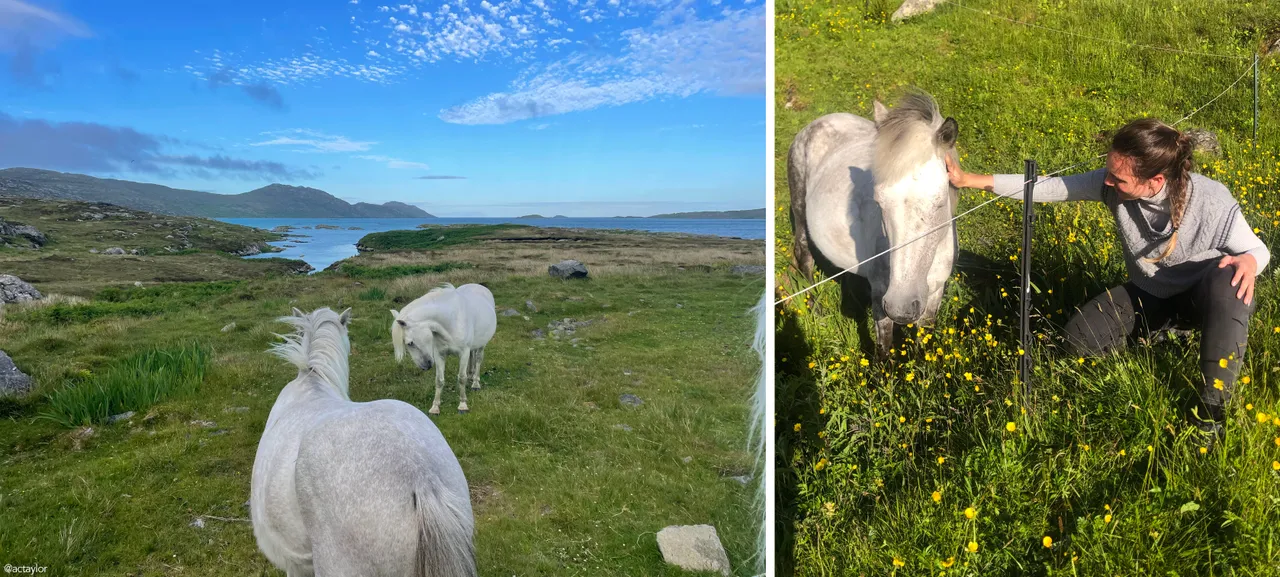
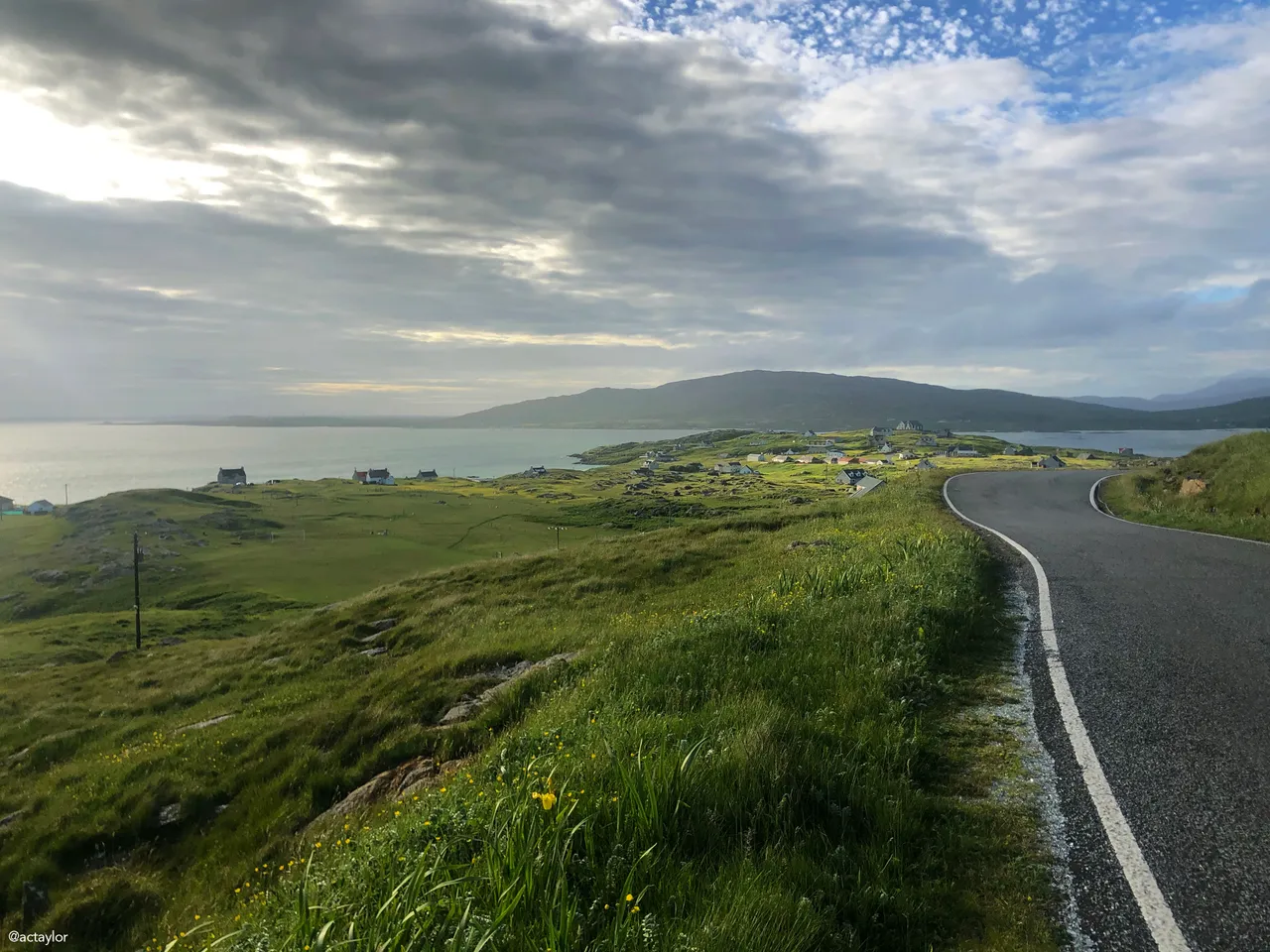
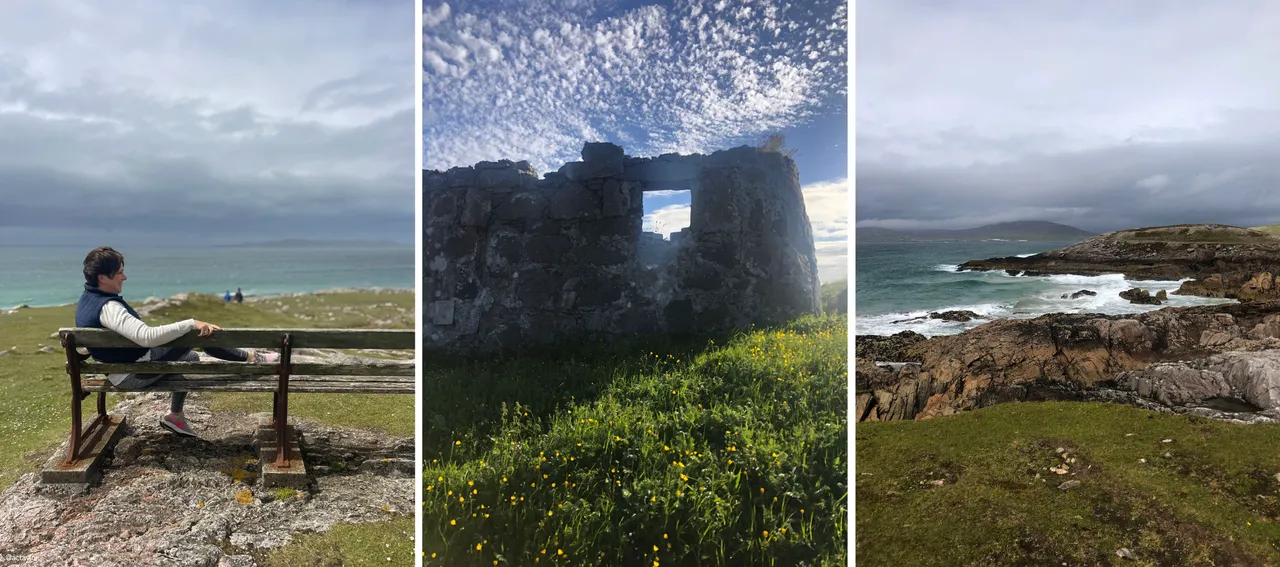
One other highlight from Eriskay were the ponies, of which there are only 300 left in the world – and the last surviving remnants of the original native ponies of the Western Isles of Scotland. They are descendants of Celtic ponies that have inhabited the islands for centuries, adapted to the harsh and rugged environment – though now very people-friendly and genteel in their own way. I was shocked to read that declining numbers in the late 20th Century meant that by 1970 there were only 20 ponies left! Mechanization of farming threatened their survival and efforts to preserve the breed intensified, leading to the establishment of breeding programs and conservation initiatives. I believe the Eriskay pony is a symbol of cultural heritage and conservation success. You can’t miss these grey wee ponies dotted about the countryside in the Uists – sociable on approach but cherished for their resilience, intelligence, and contribution to the island's history and identity.
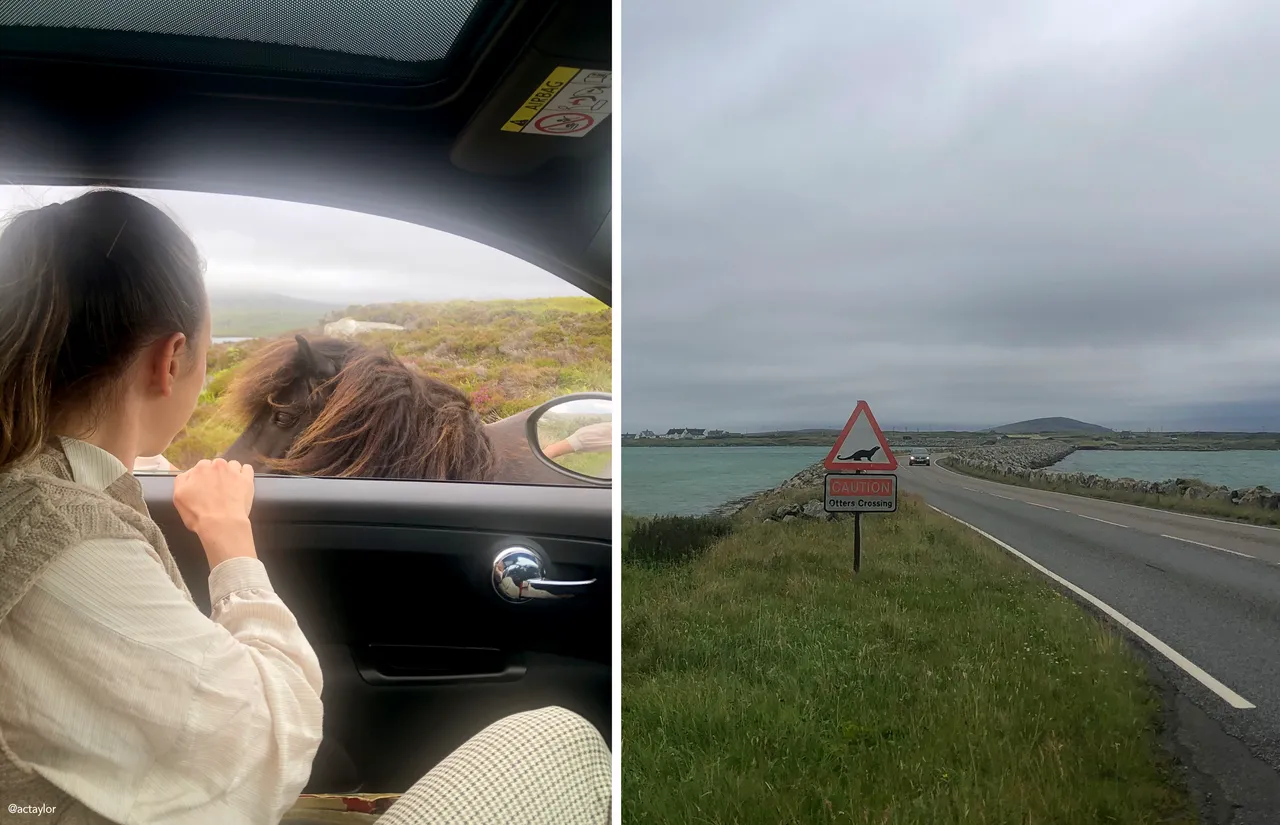
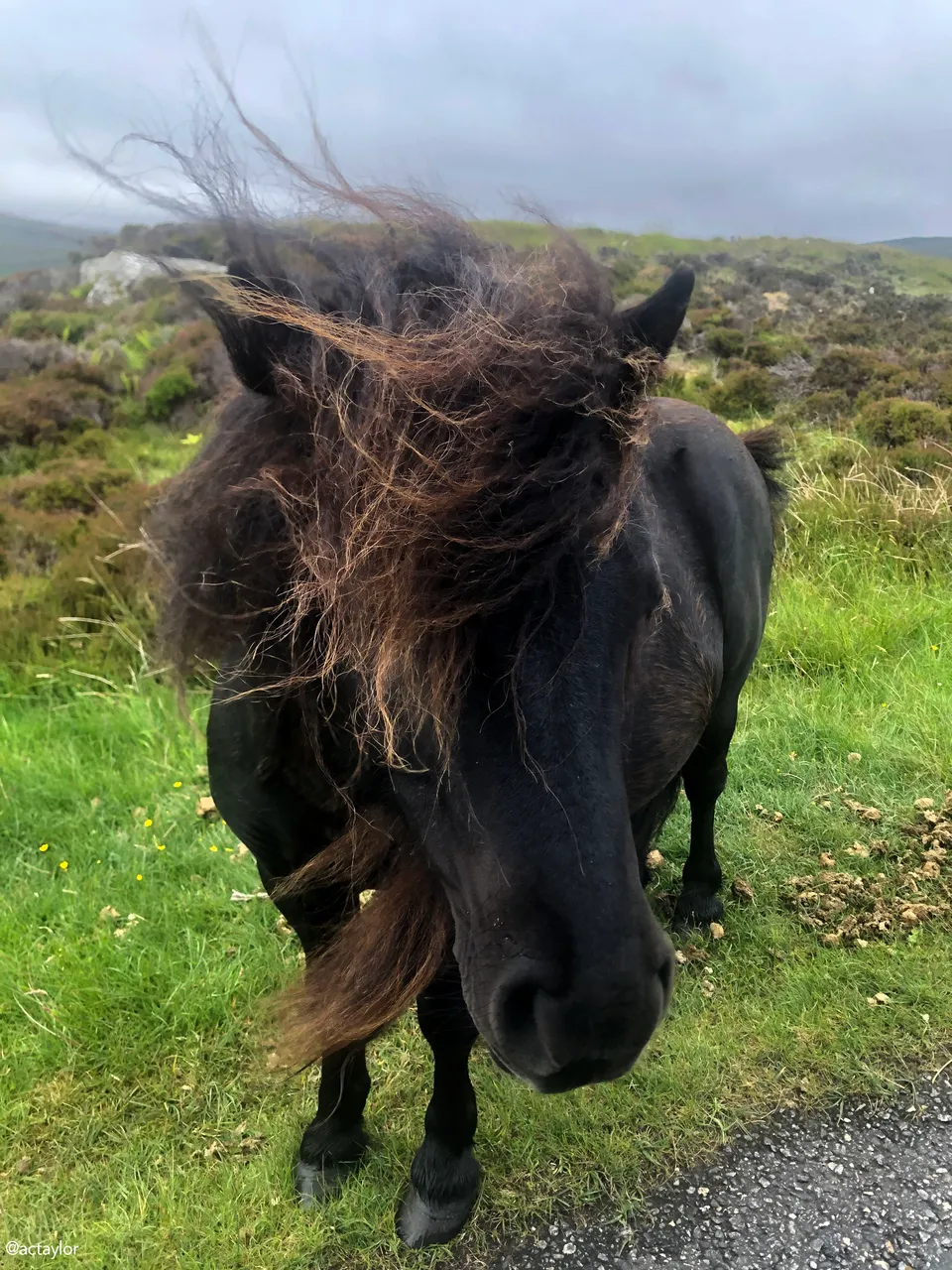
Before boarding the ferry from Berneray to Leverburgh we made the most of our time travelling through Uist - exploring as much as we could of its six islands that form part of the Outer Hebridean Archipelago.
We stayed at the Croisgeir self-catering pod: wonderful. It won me at “hello” with a well-stocked biscuit tin on the countertop. Uist – deserted but for birds, scattered ruins and almost unbroken strand of beach running for miles down the west coast; the machair is best in early summer, according to Irving’s book – which we dubbed “the Good Book” because it hadn’t led us astray yet. We turned off at Tobha Mòr, 25km north of Lochboisdale, and discovered a recently restored chapel on the way to the sea. Lingered a while at Barpa Langass: visible from main road. Despite looking like a squashed beehive, this burial cairn dates from 1,000 BC and is the tomb of a chieftain. It’s largely intact but it’s entrance was closed off for safety.
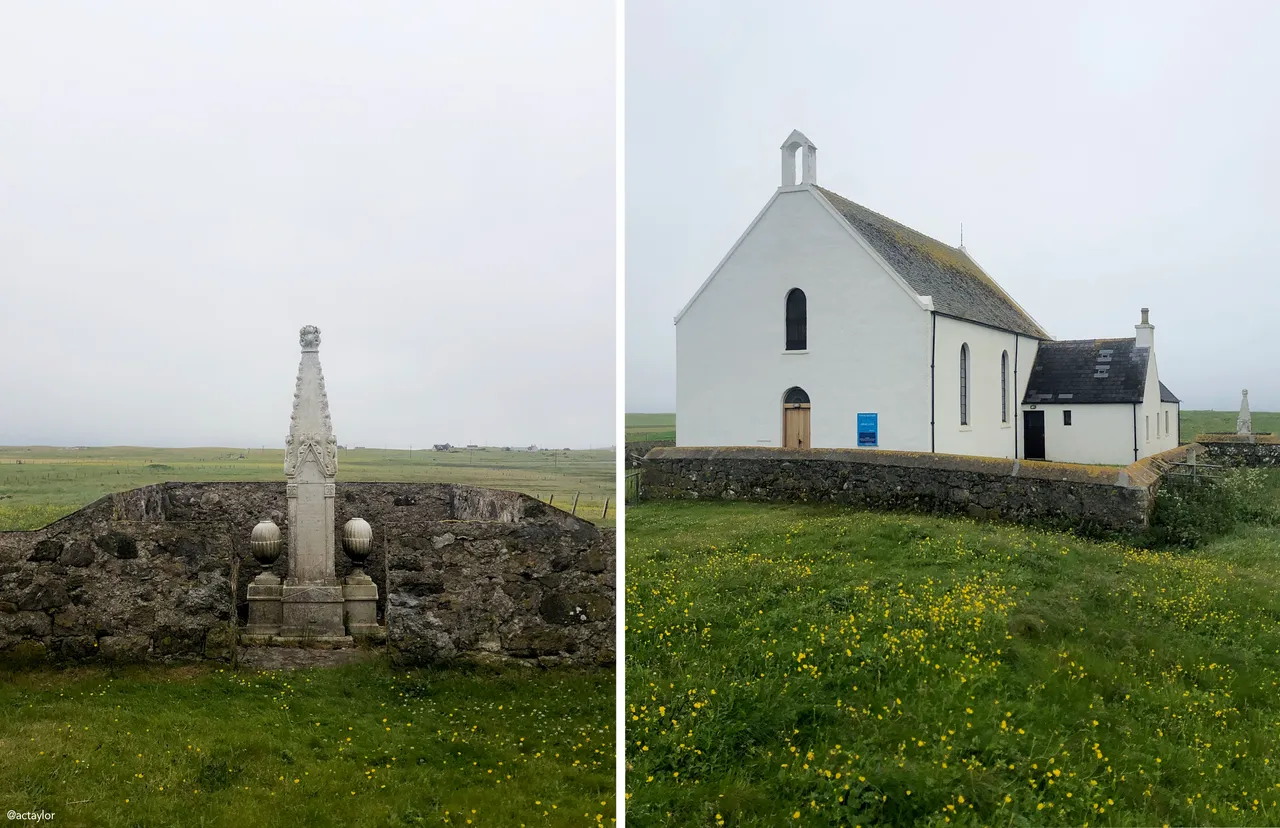
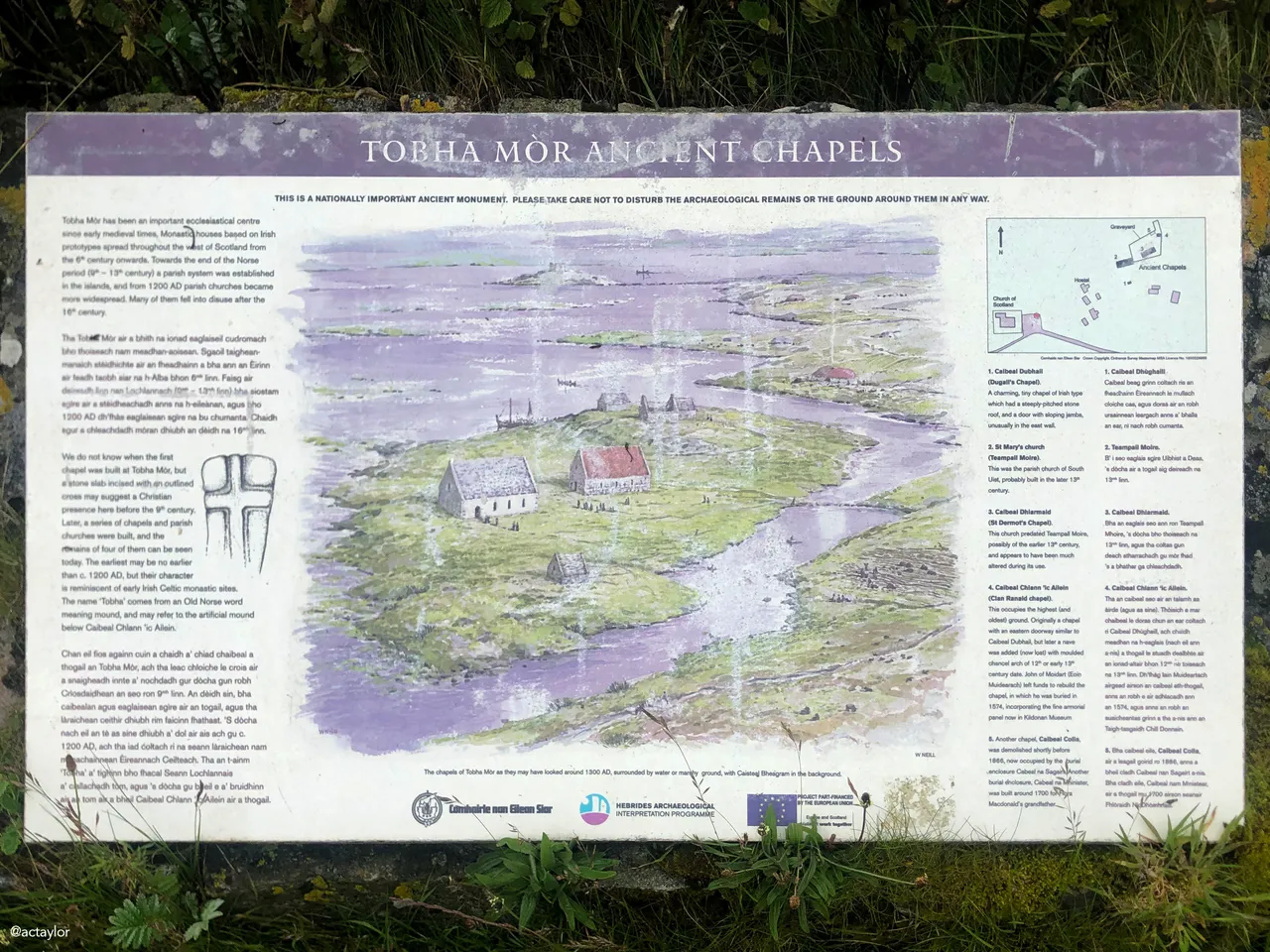
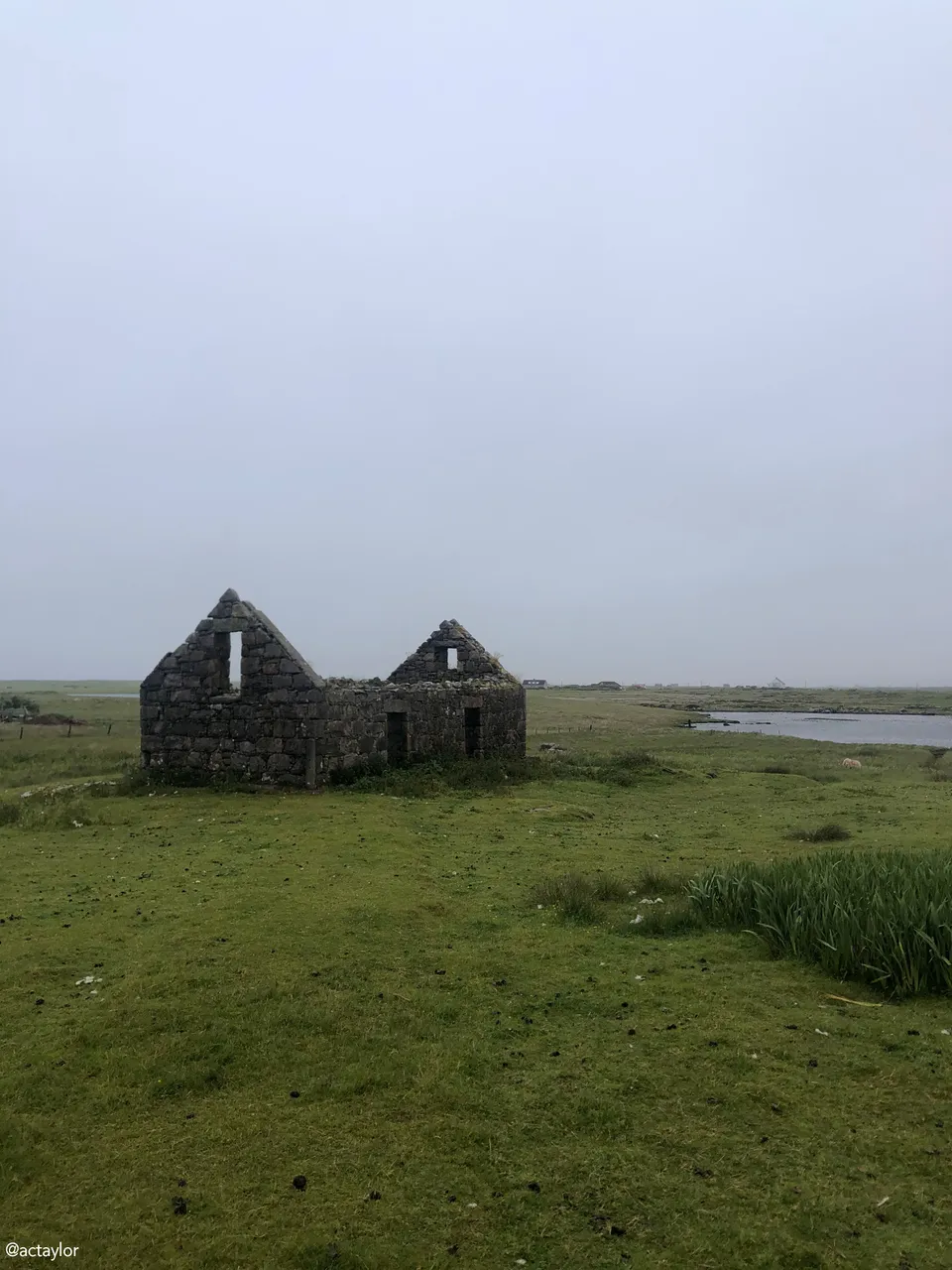
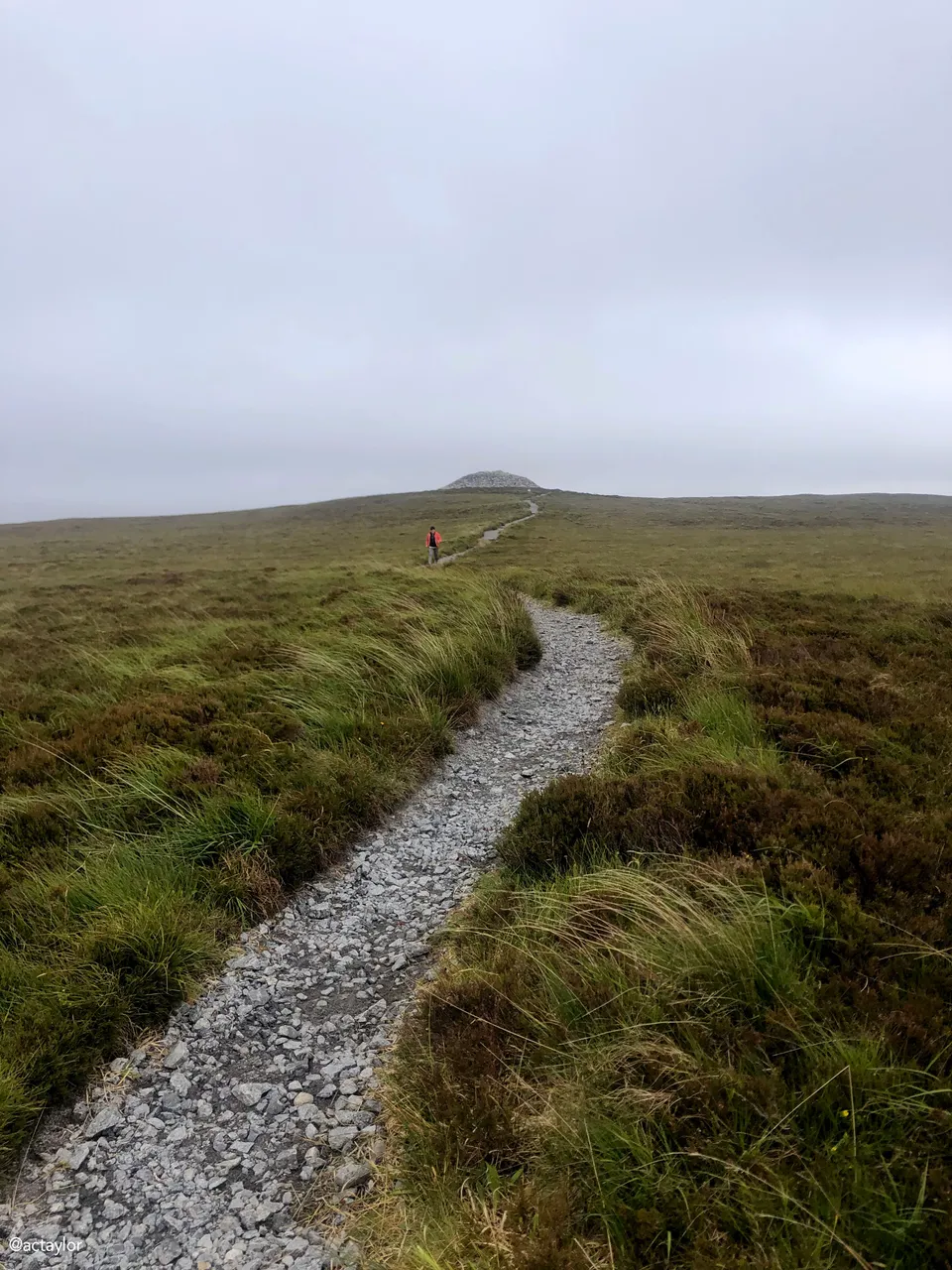
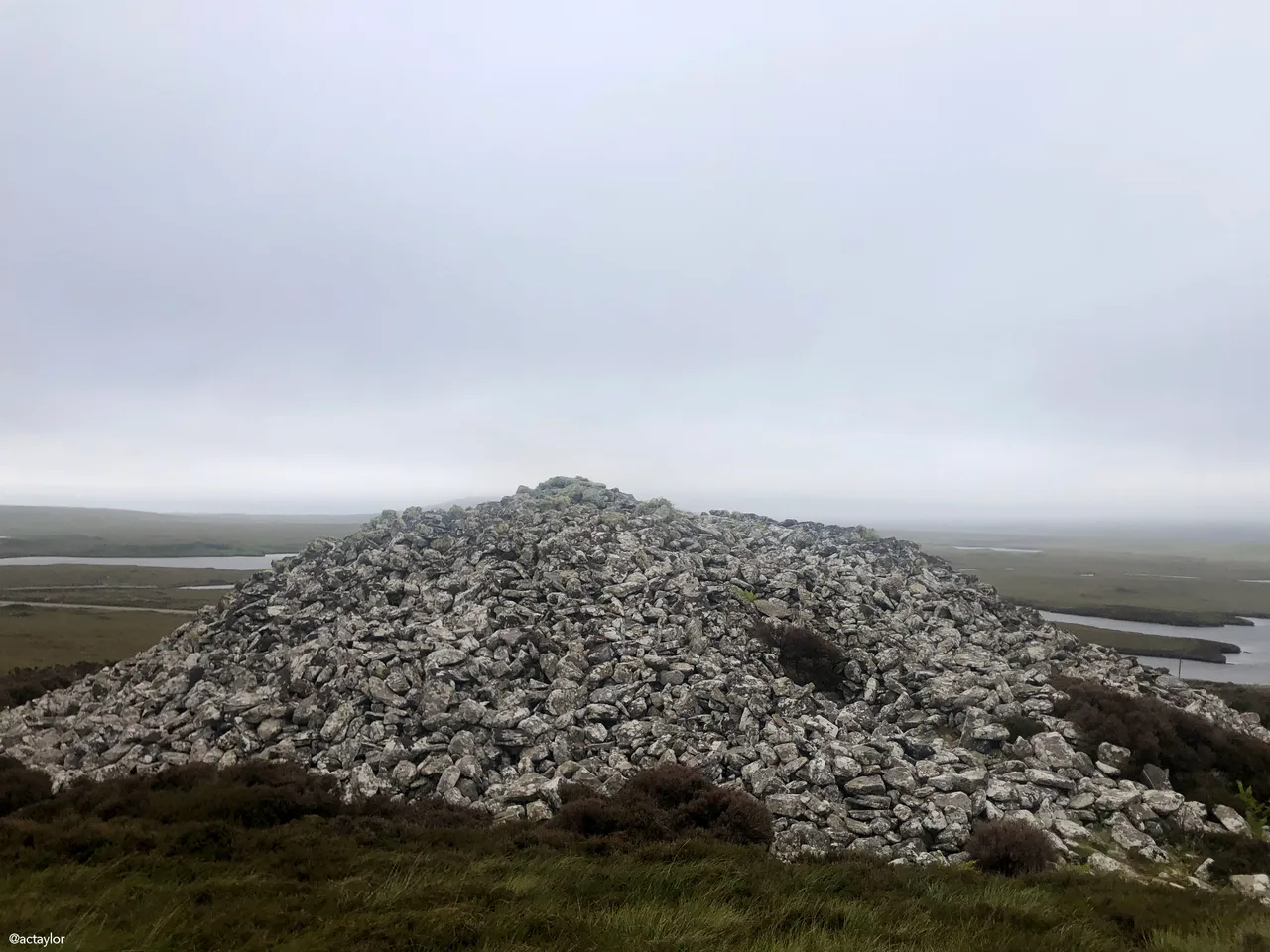
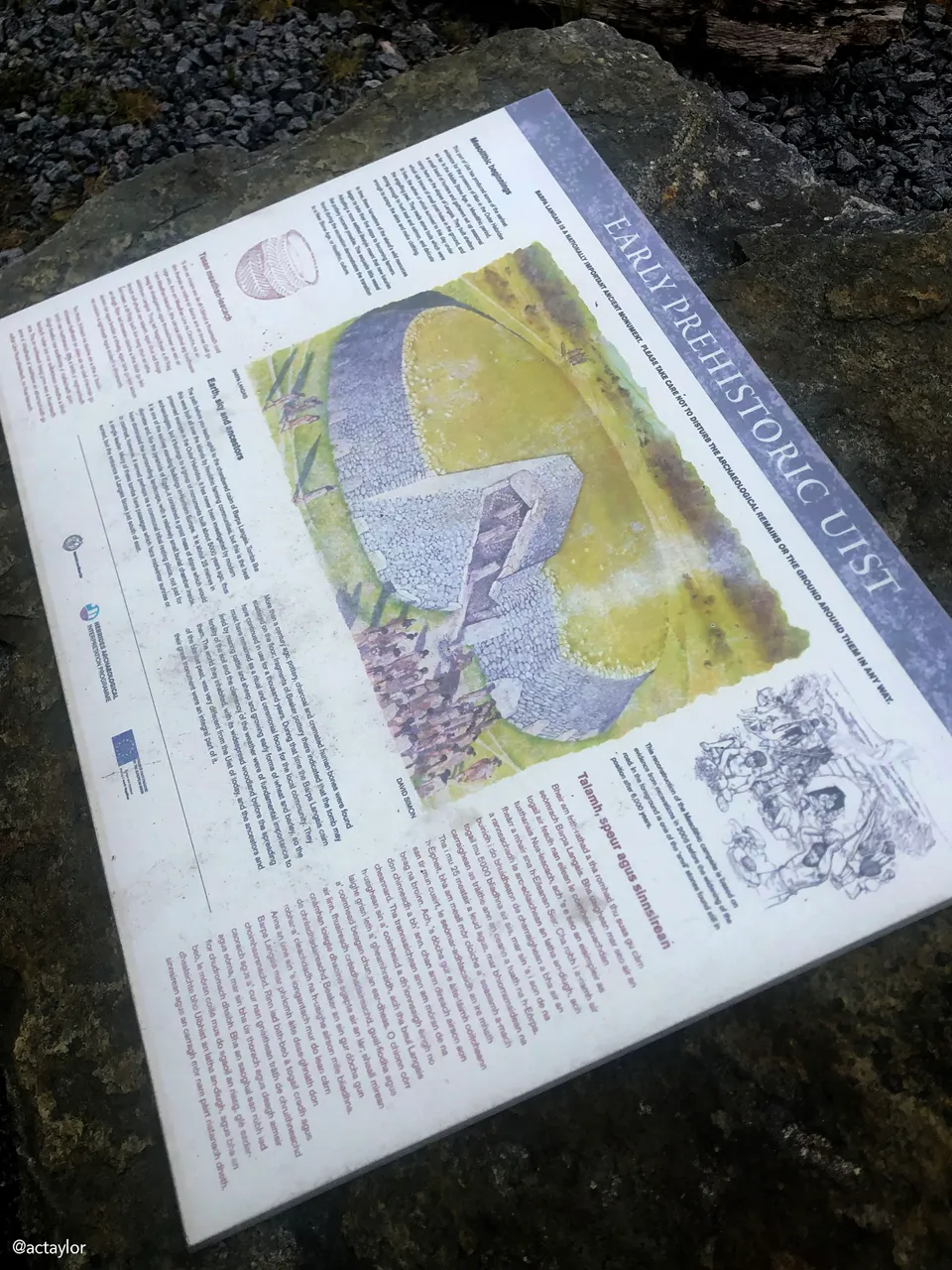
Immediately after exiting the ferry terminal on the Isle of Harris, we came across the Butty Bus. A four-wheeled, greasy delight located at the pier - you can’t miss it. A destination in itself even if you’re not en route. The signage outside reads: 'A catering establishment with 4 Michelin tyres,' which I'm sure inspires an image in your mind that is not far from the truth - the Butty Bus has status as a local legend and there's no disputing this. Topped only by an equally quirky experience... If you're ever in Harris you have to visit Croft 36 - located on the road into village north of Leverburgh. It’s fully stocked with homemade treats – from wild rabbit pastries to frangipanes. The best kind of pop-up, including a community and visitor service board. We bought some butteries here, which are a North-East delicacy so glad to have found some! Left the money in an honesty box. Couldn't recommend Croft 36 more.
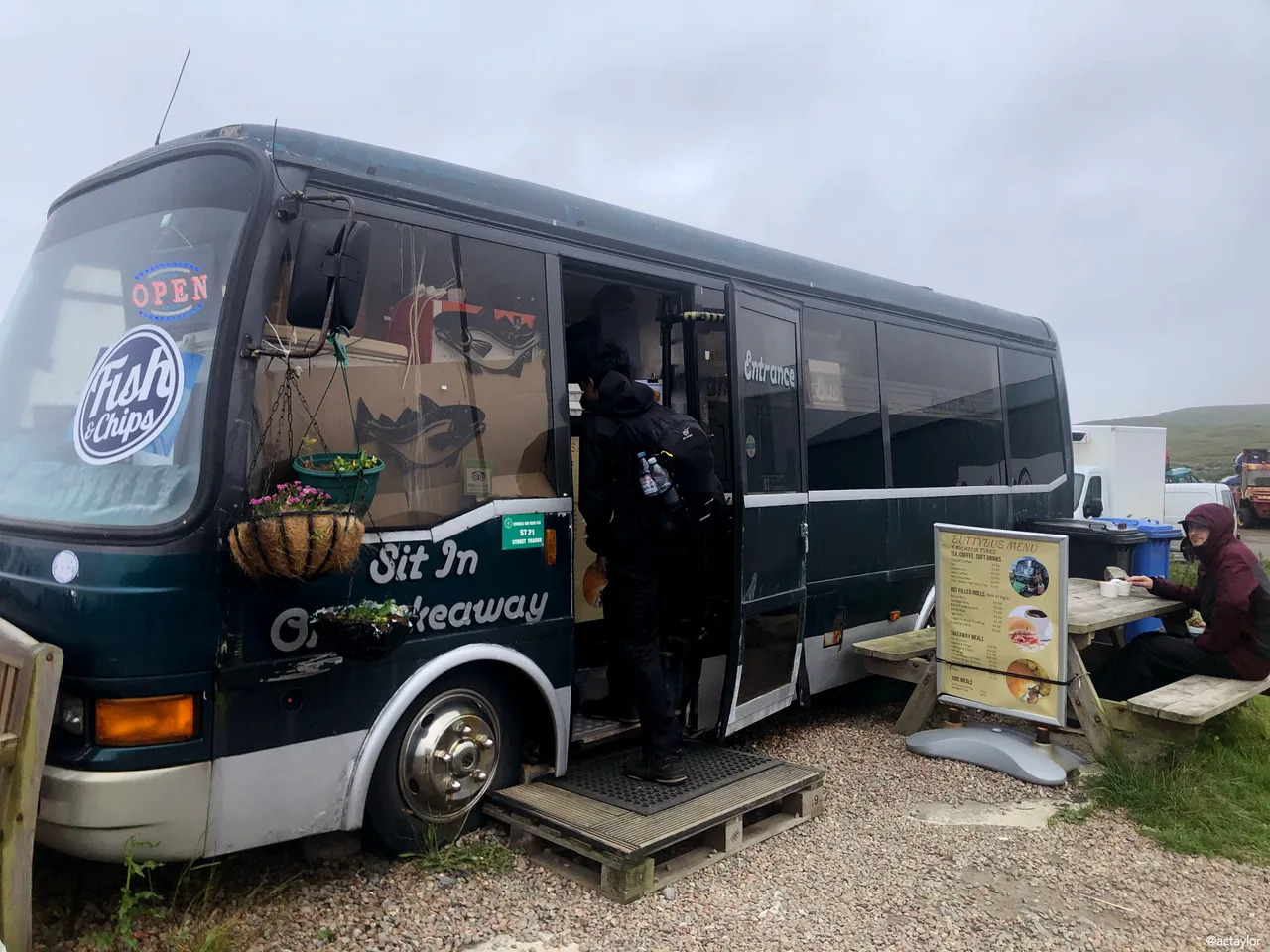
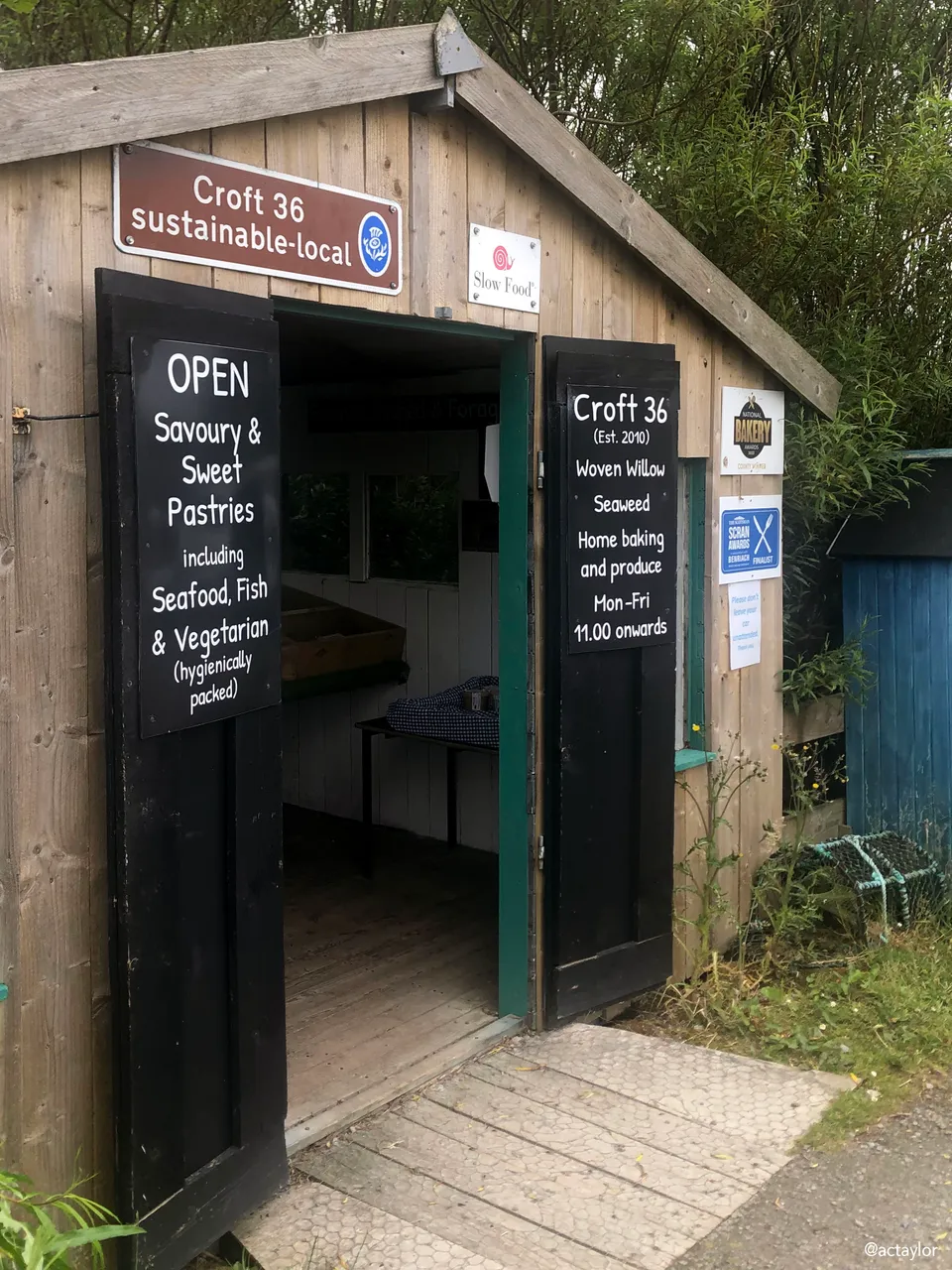
As for coffee we desperately wanted to visit Temple Northton but it was closed! SO if you do stop by, you’ll have to tell me about it? It’s a stone building reminiscent of a Blackhouse, designed by Stuart Bagshaw in 1999 as an interpretive centre of William MacGillivray, an ornithologist from Harris who worked with John James Audubon on the book ‘Birds of America’. It is now a café.
And then there’s the Golden Road: the main road in Harris follows the West Coast. Scarista Beach and the Beaches of South Harris are truly breathtakingly beautiful. (It was here that I was forbidden from using the word “beautiful” because it'd become so overused.) On west coast road south of Tarbert (20km to Rodel) began Scarista Bay - so exquisite a site that people spontaneously get married here… in fact my old boss in Cambridge and her husband did just that - got married on the fly on a beach so perfect even poets struggle to describe it. Kathleen Raine comes close in her depiction of Harris as a "mystic land" where "ancient spirits lie". It’s an ethereal coast with so many extraordinary beaches: immense Luskentyre, Horgabost, and Northton. We spied Macleods Stone whilst passing the Horgabost Campsite.
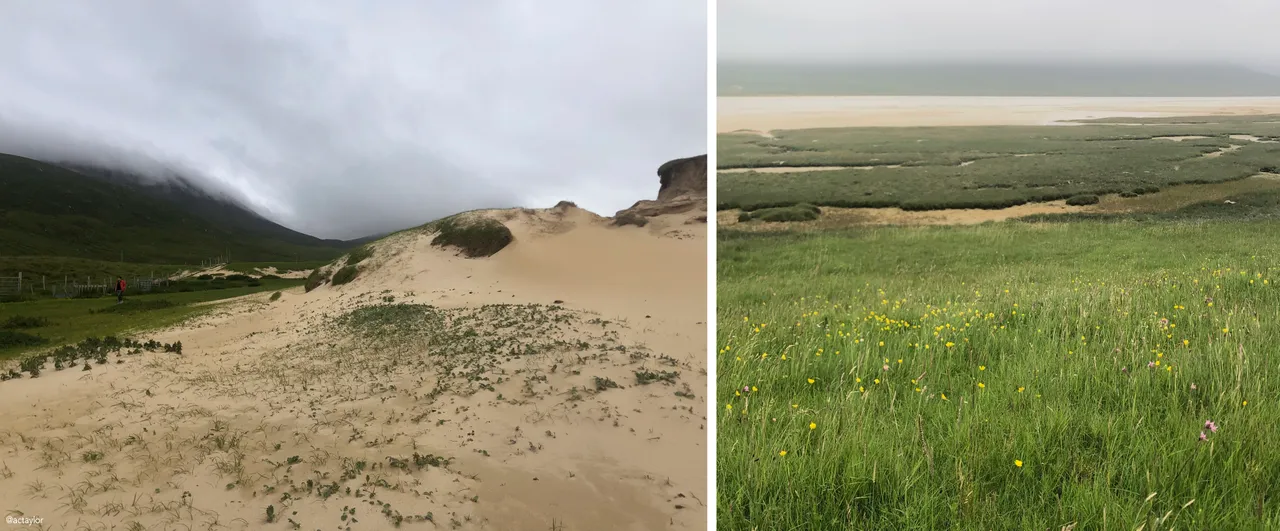

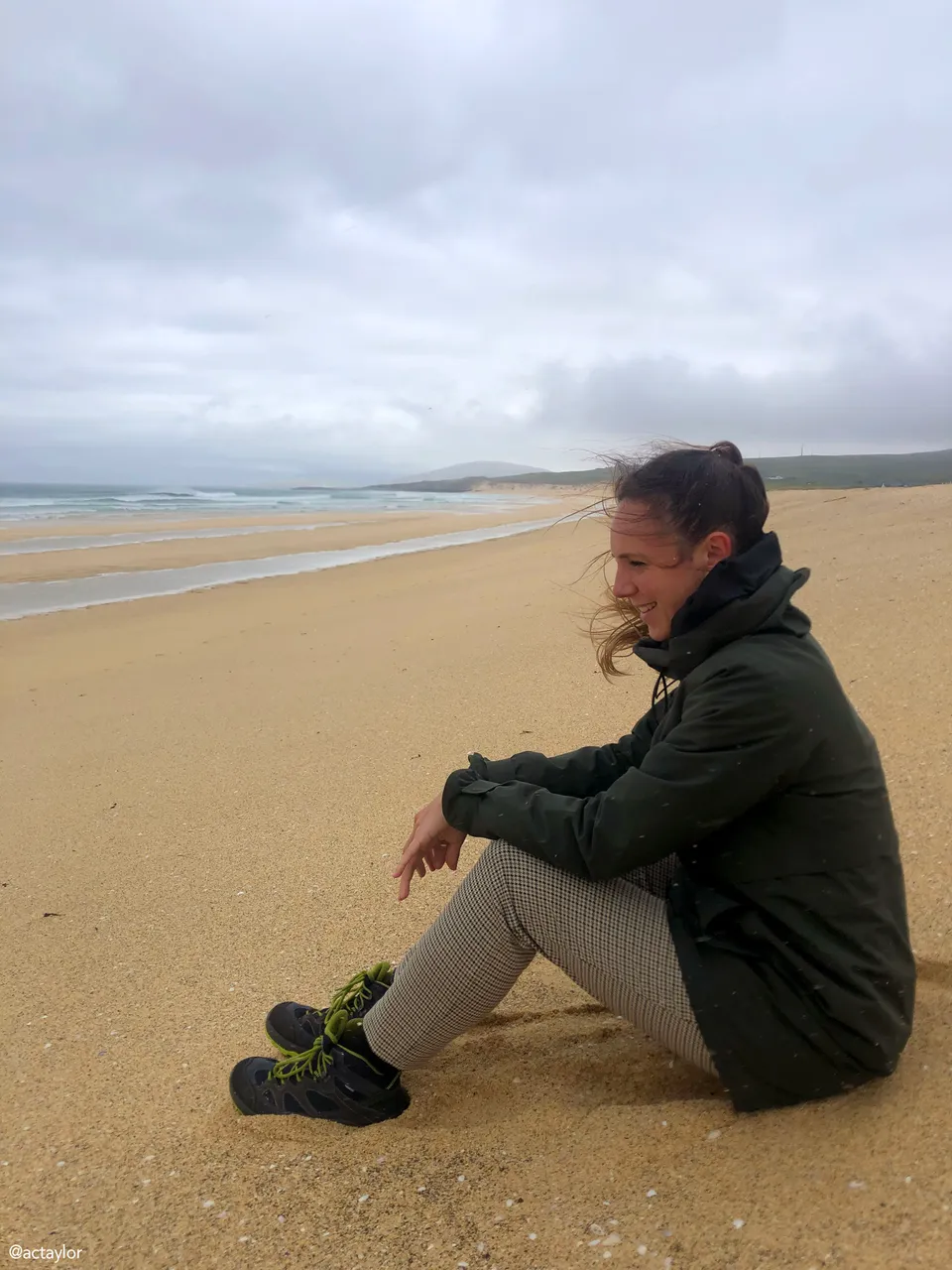
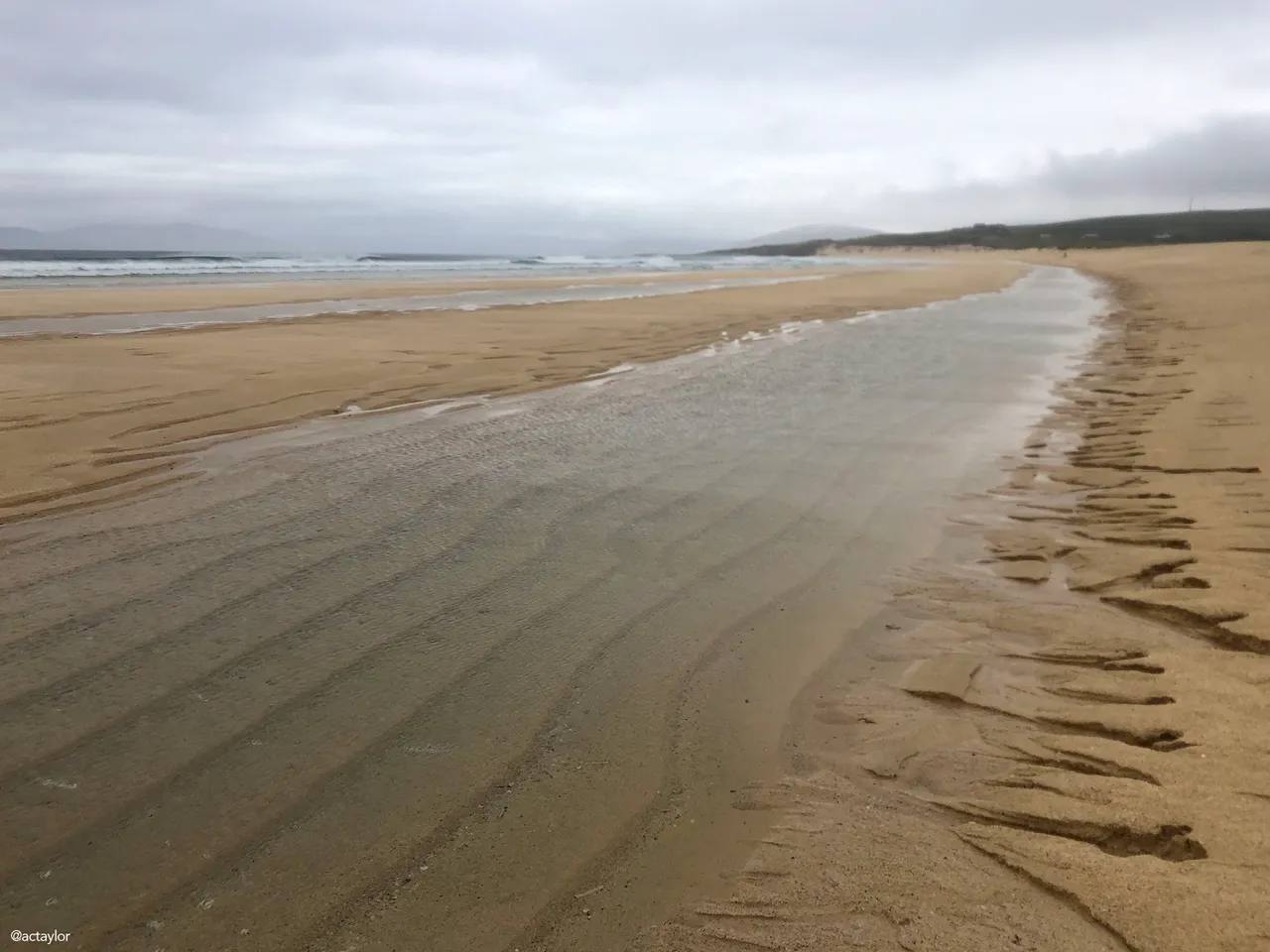


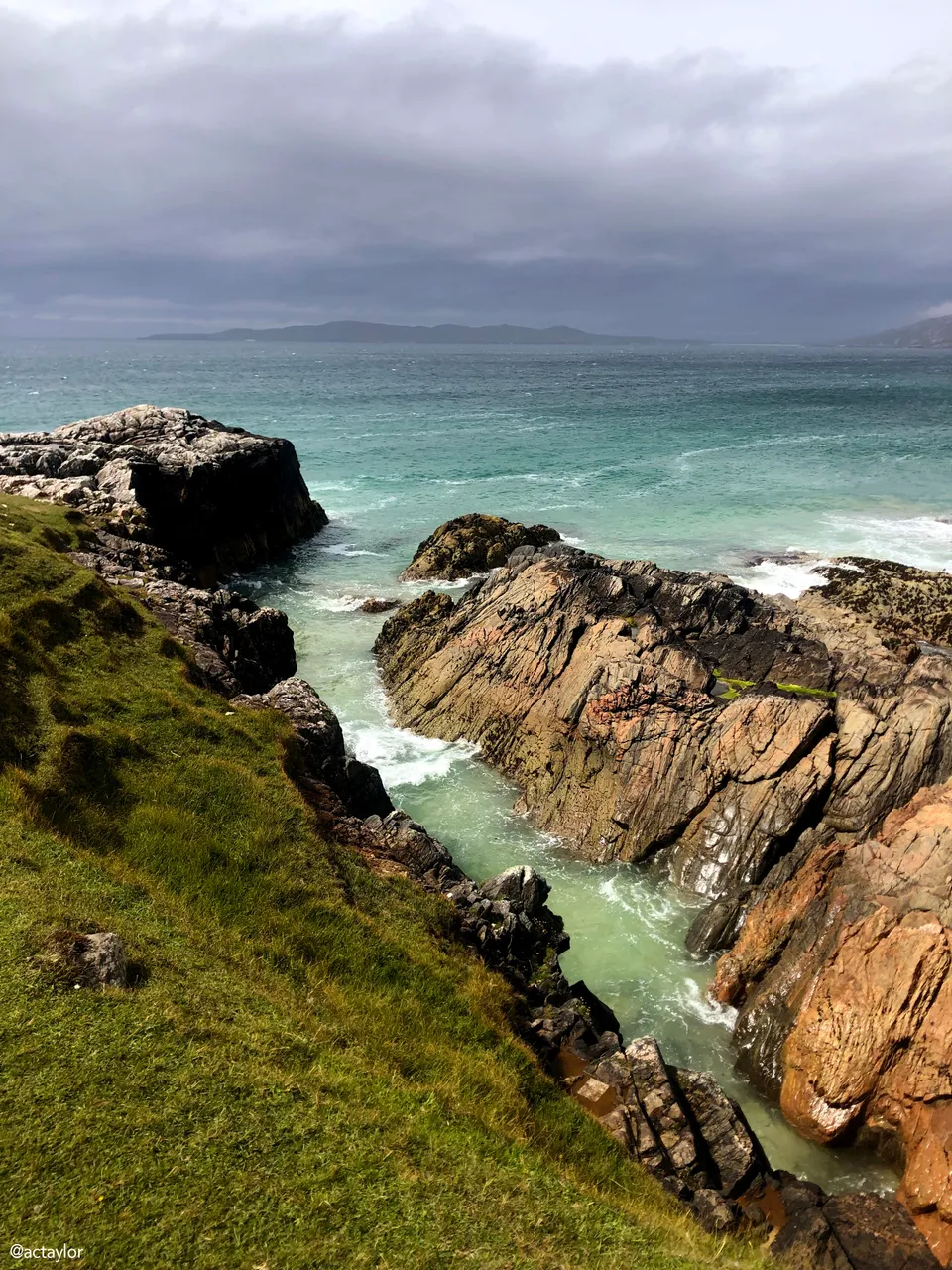
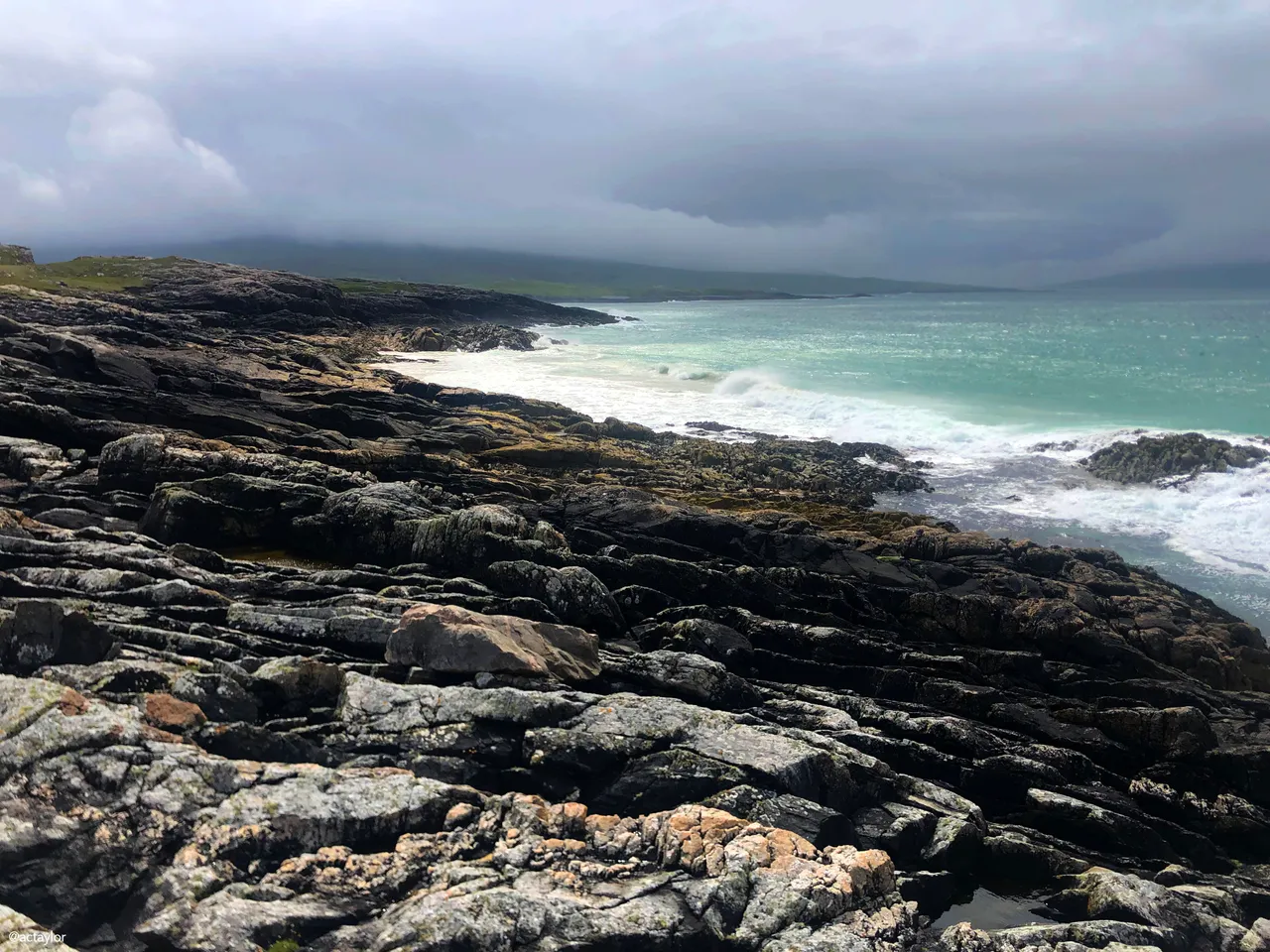
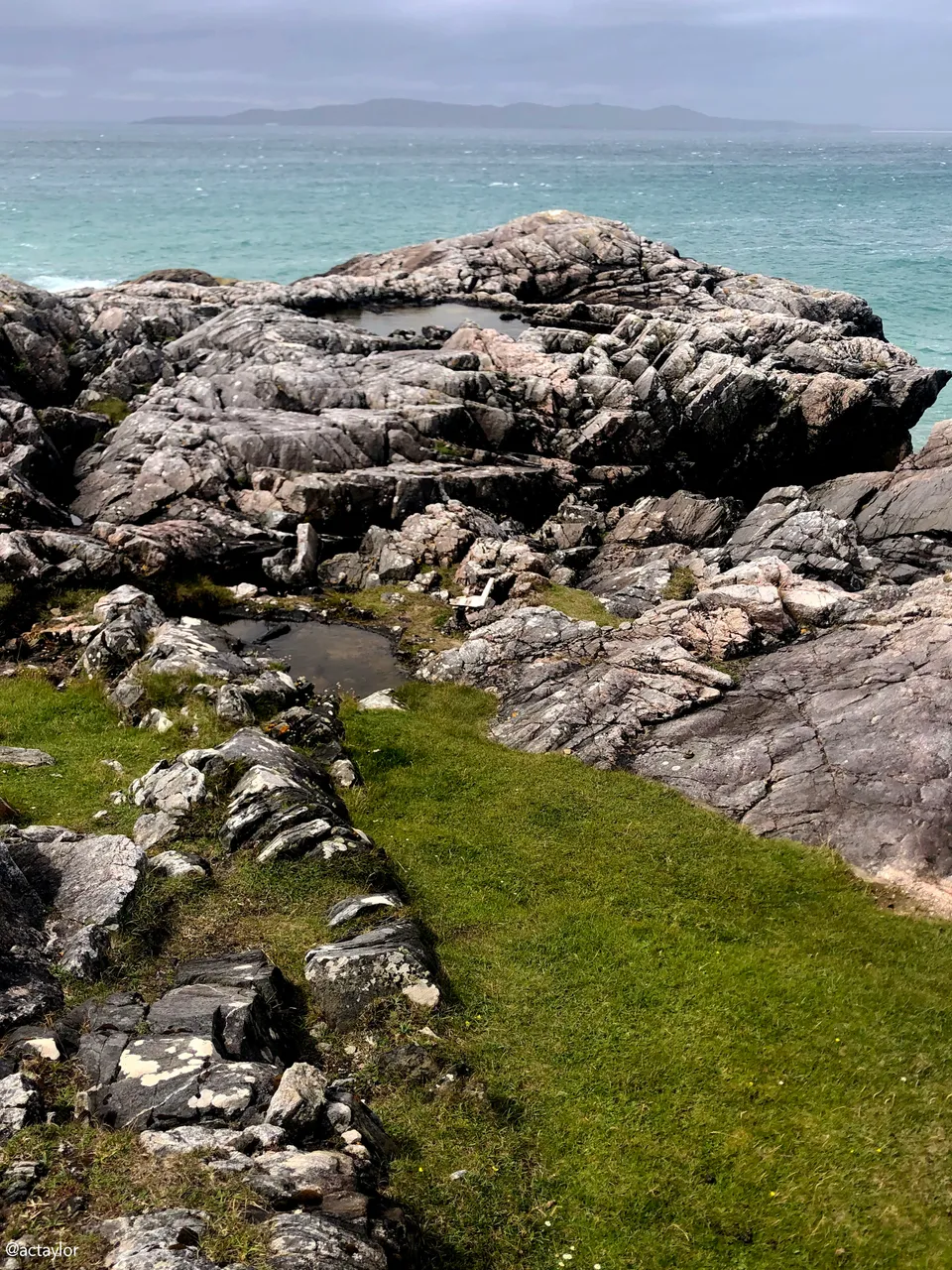

A quick nip into the Isle of Harris Distillery in search of the island’s infamous maritime gin. With its sugar kelp flavour in its distinctive rippled blue bottle, the drink has become an international winner despite the distillery only opening in 2015. It also has a great café with home-baking. Ordered a salted caramel brownie and coffee with oatmilk. Delicious.
And here we’ll take pause – there’s just too much to digest and share – Lewis and Loch Lomond deserve their own space. So, despite such a determined effort to finish on three… ahah!... I regret to inform you we'll have to make do with a fourth post.
But who’s complaining.
Tbc.
Disclaimer
Blogger: @actaylor
Photographs: unless otherwise noted, all images were taken by me or mum with an iPhone 8 and an iPhone 14